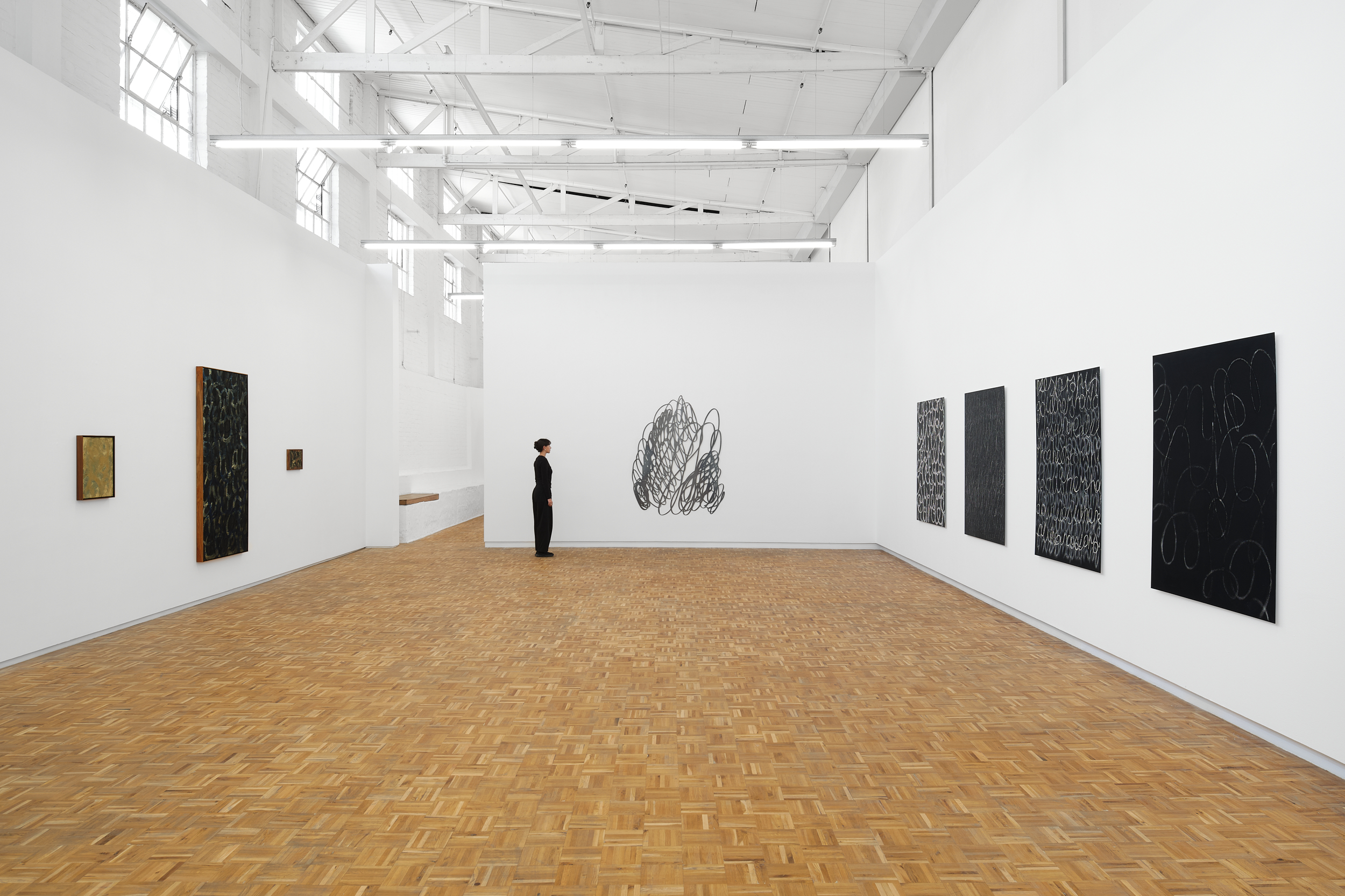
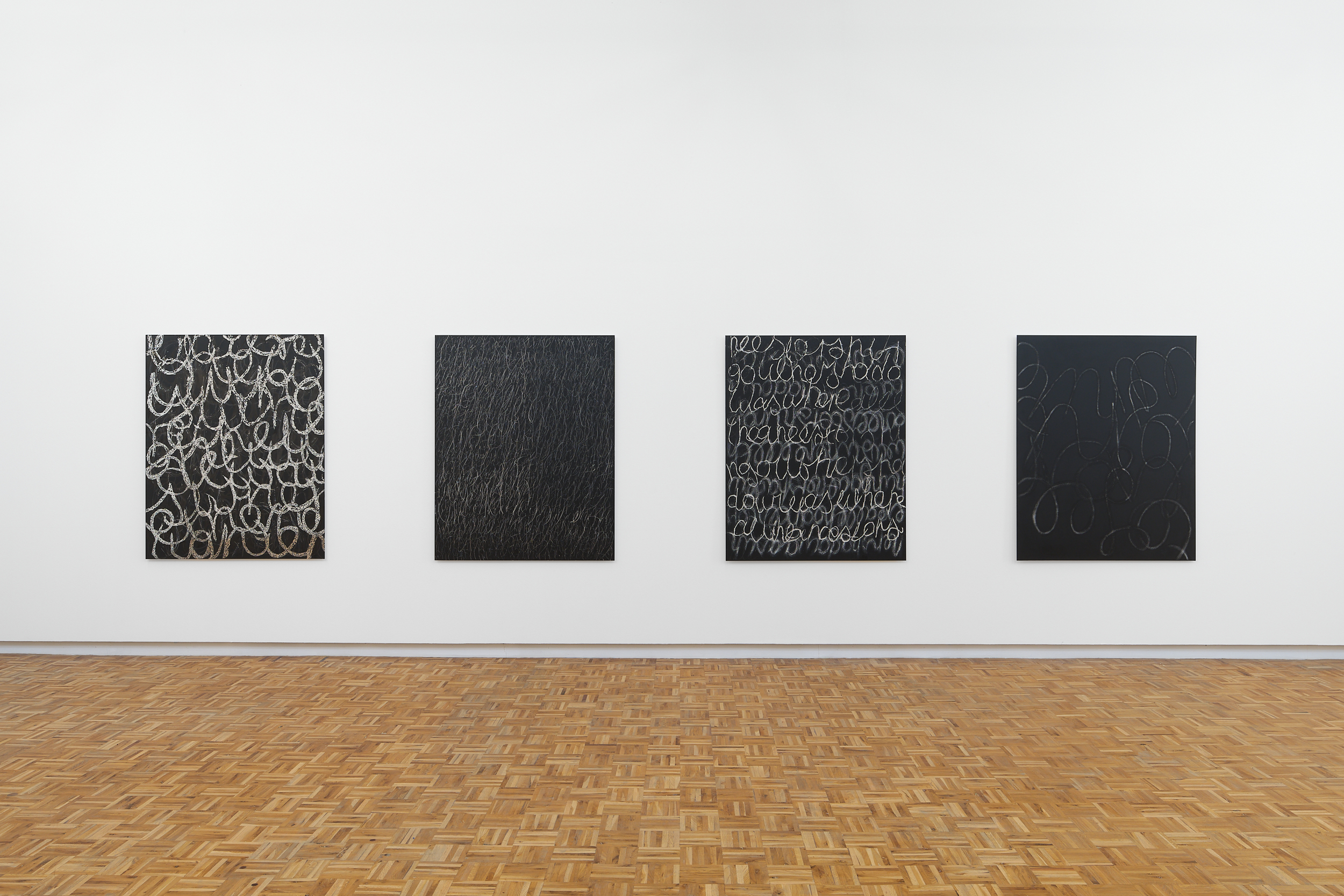
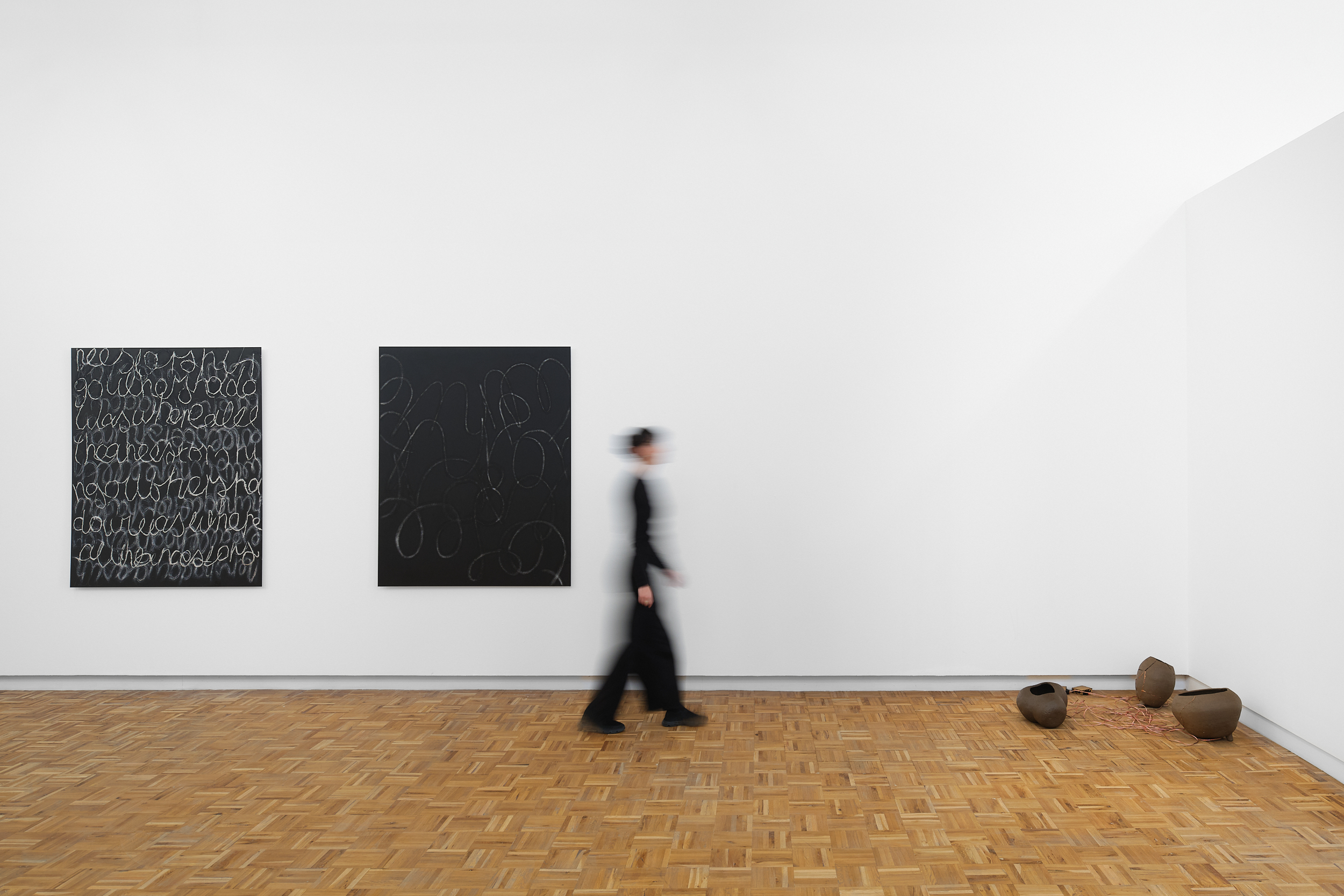
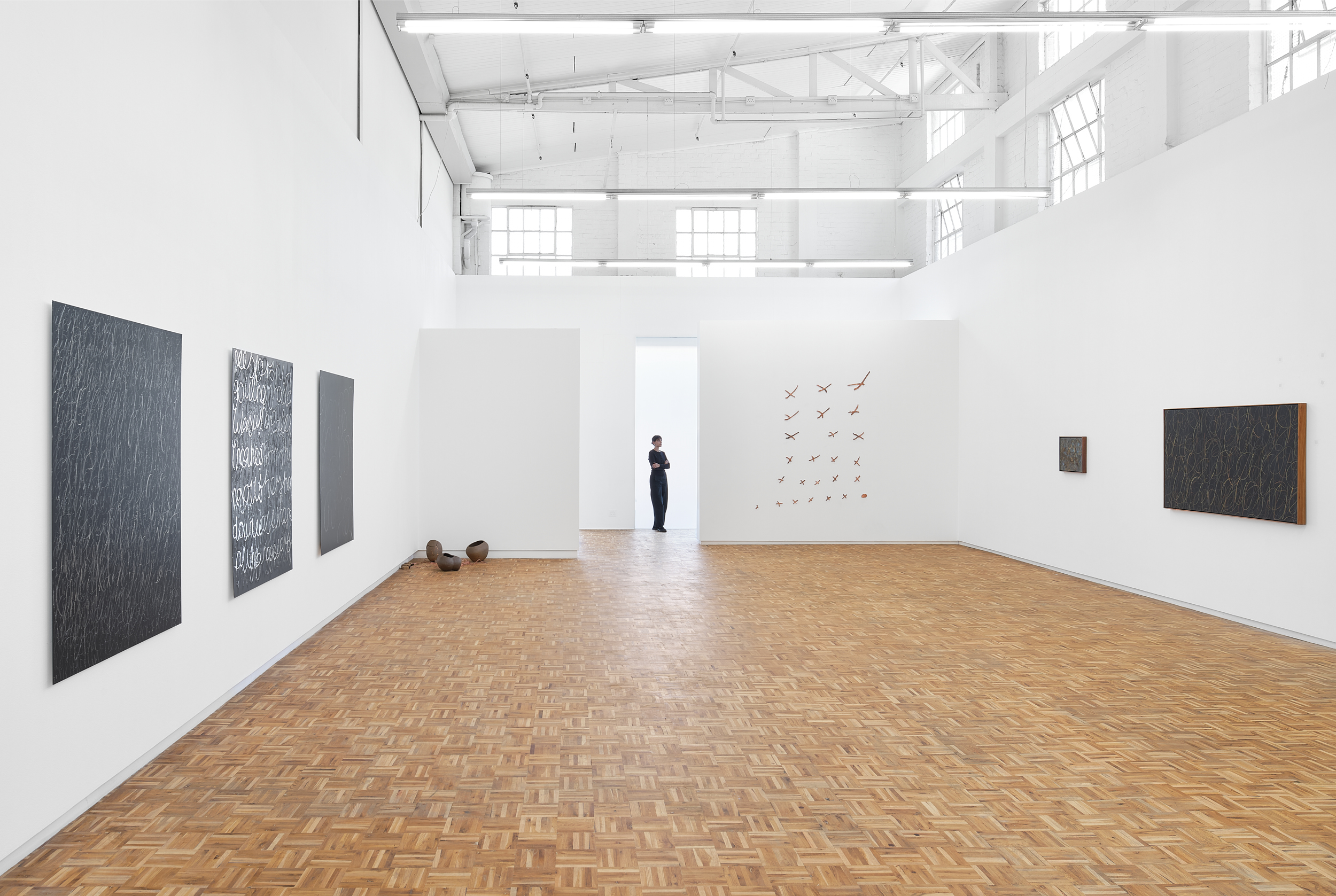
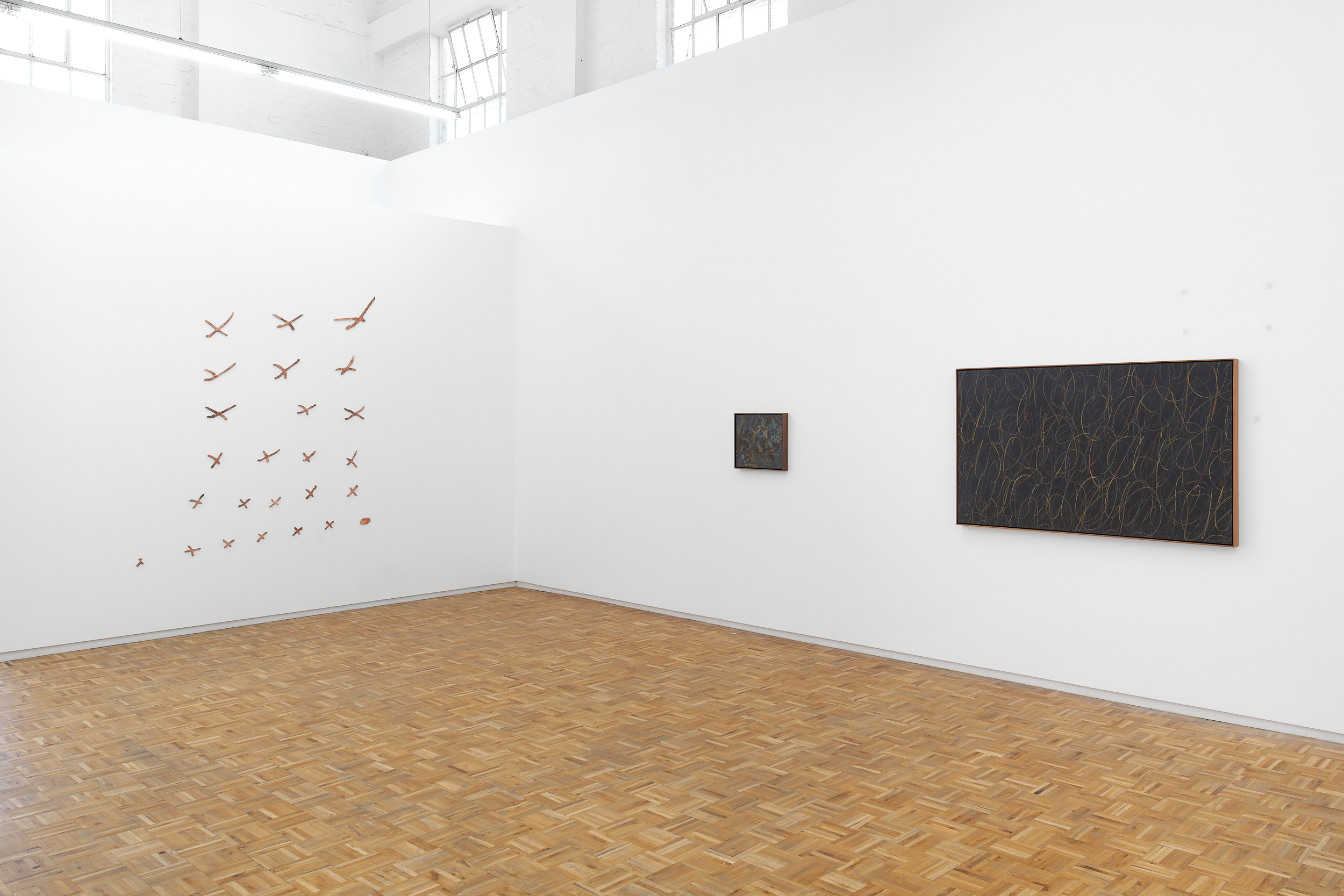

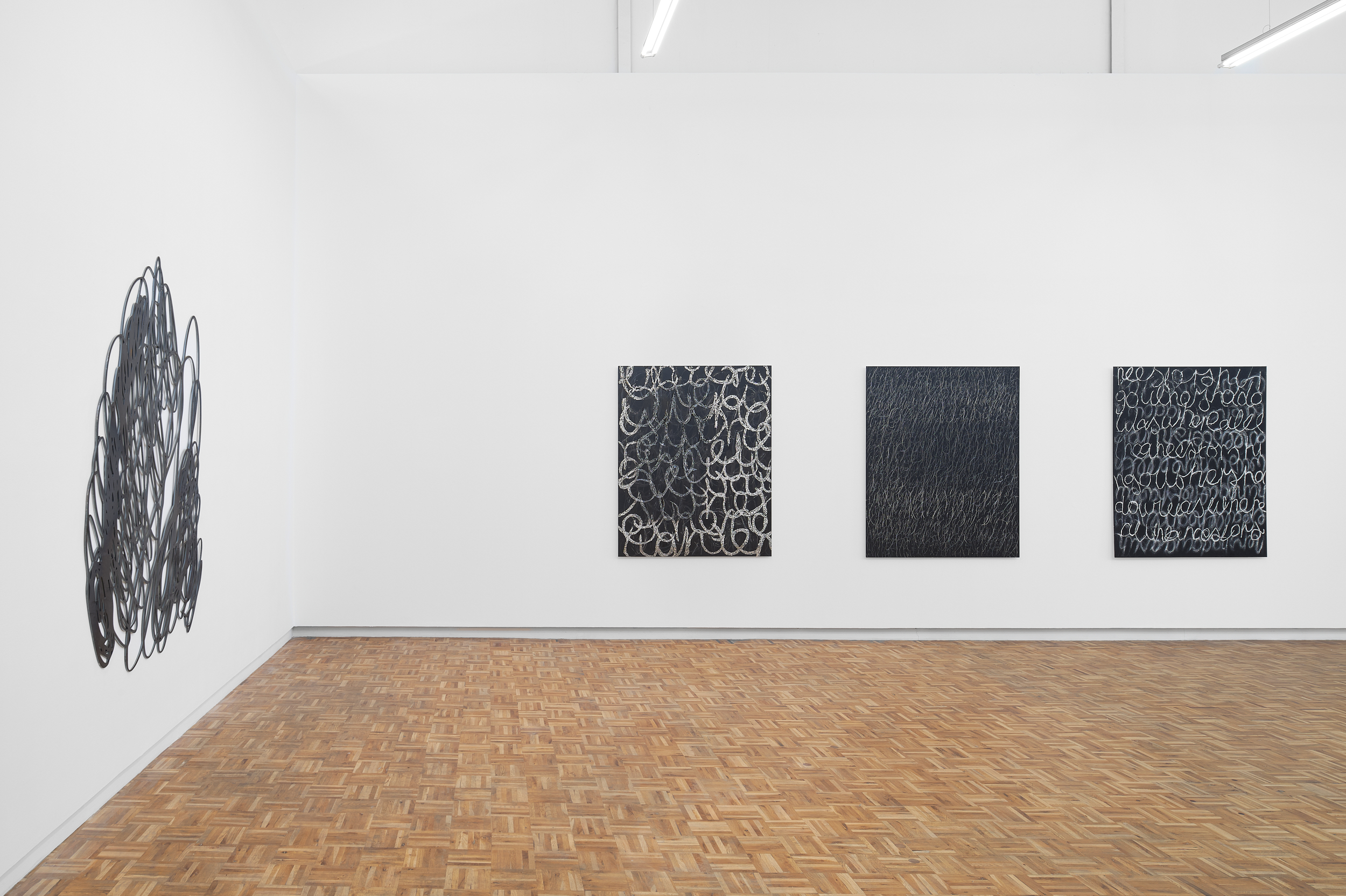
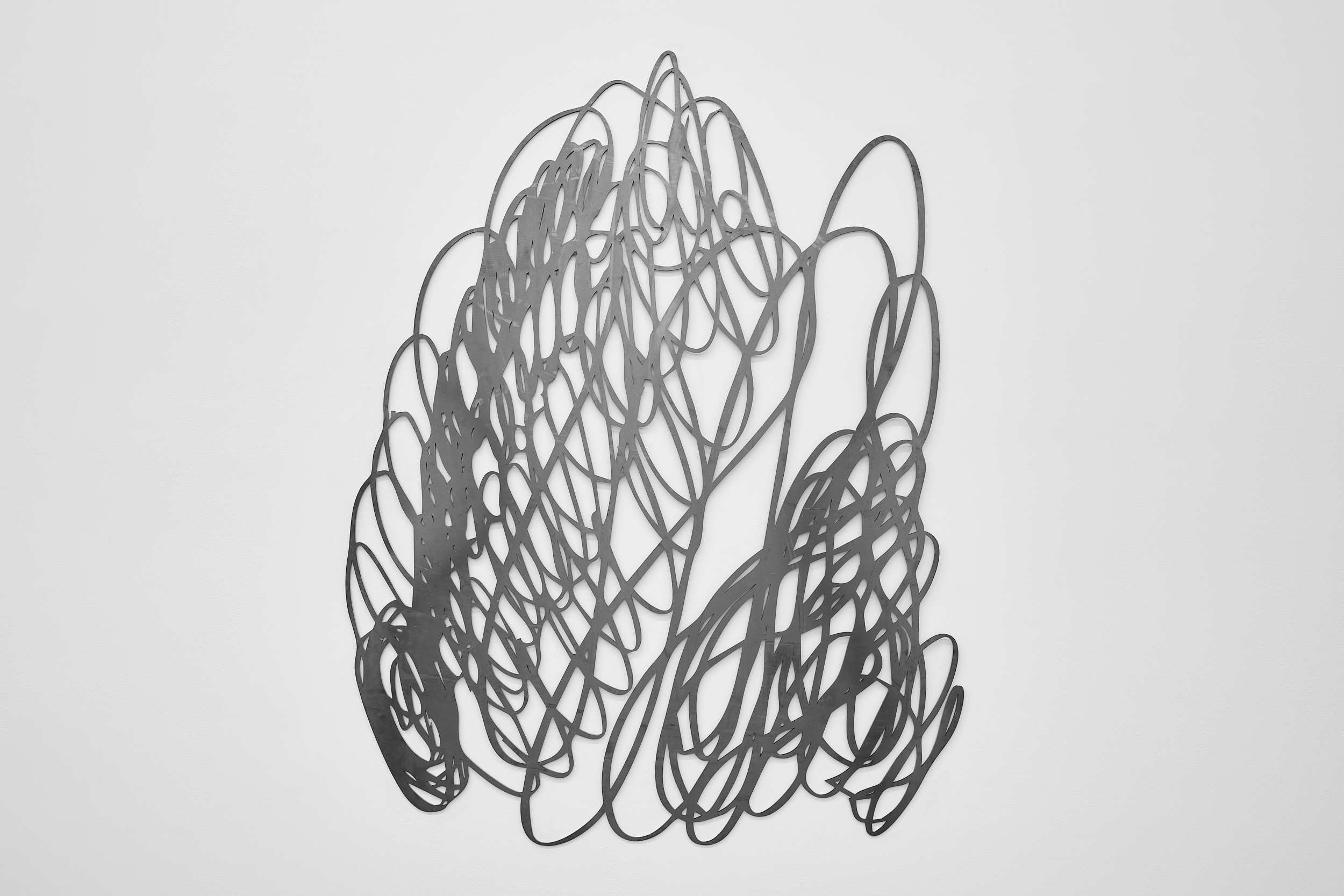
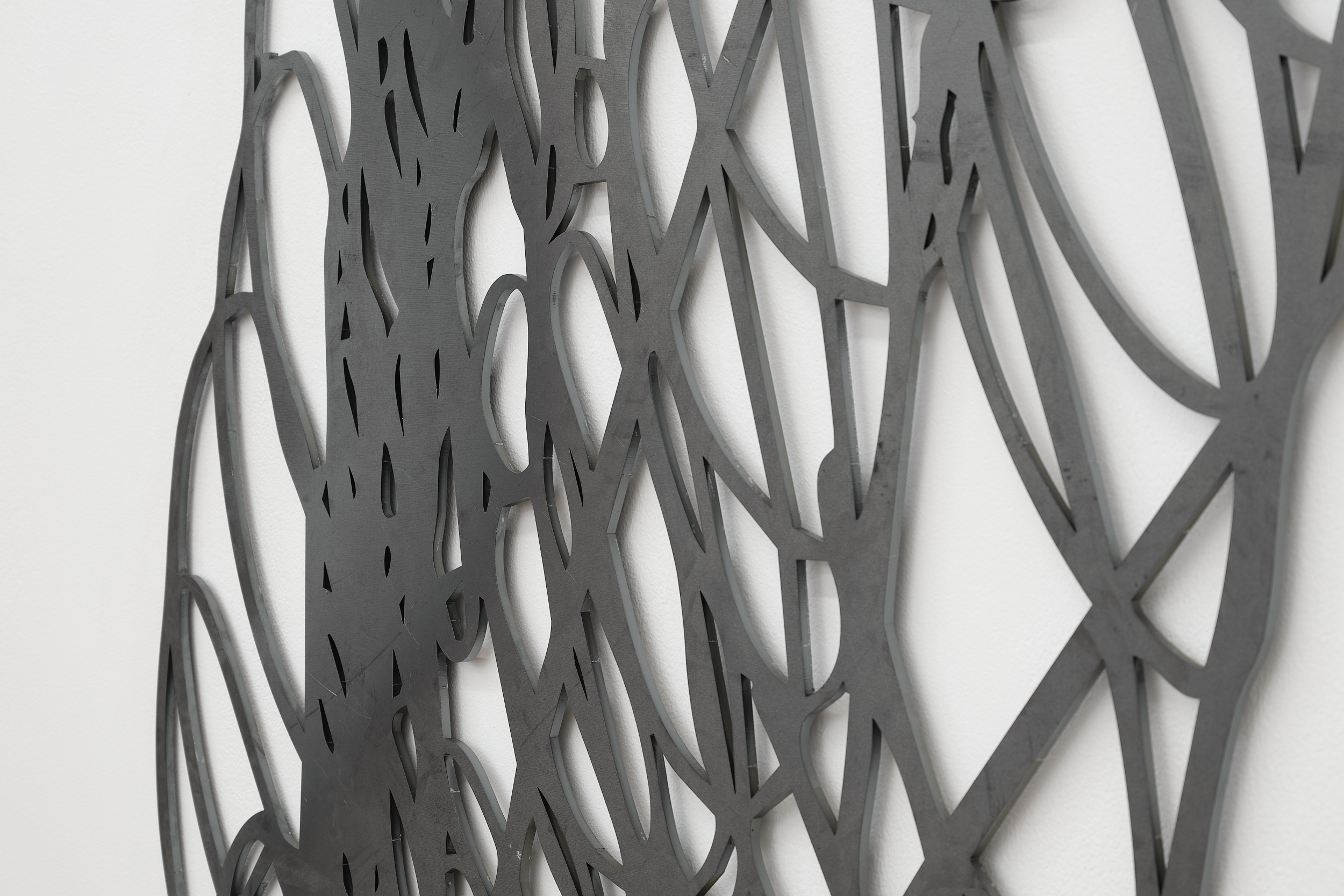
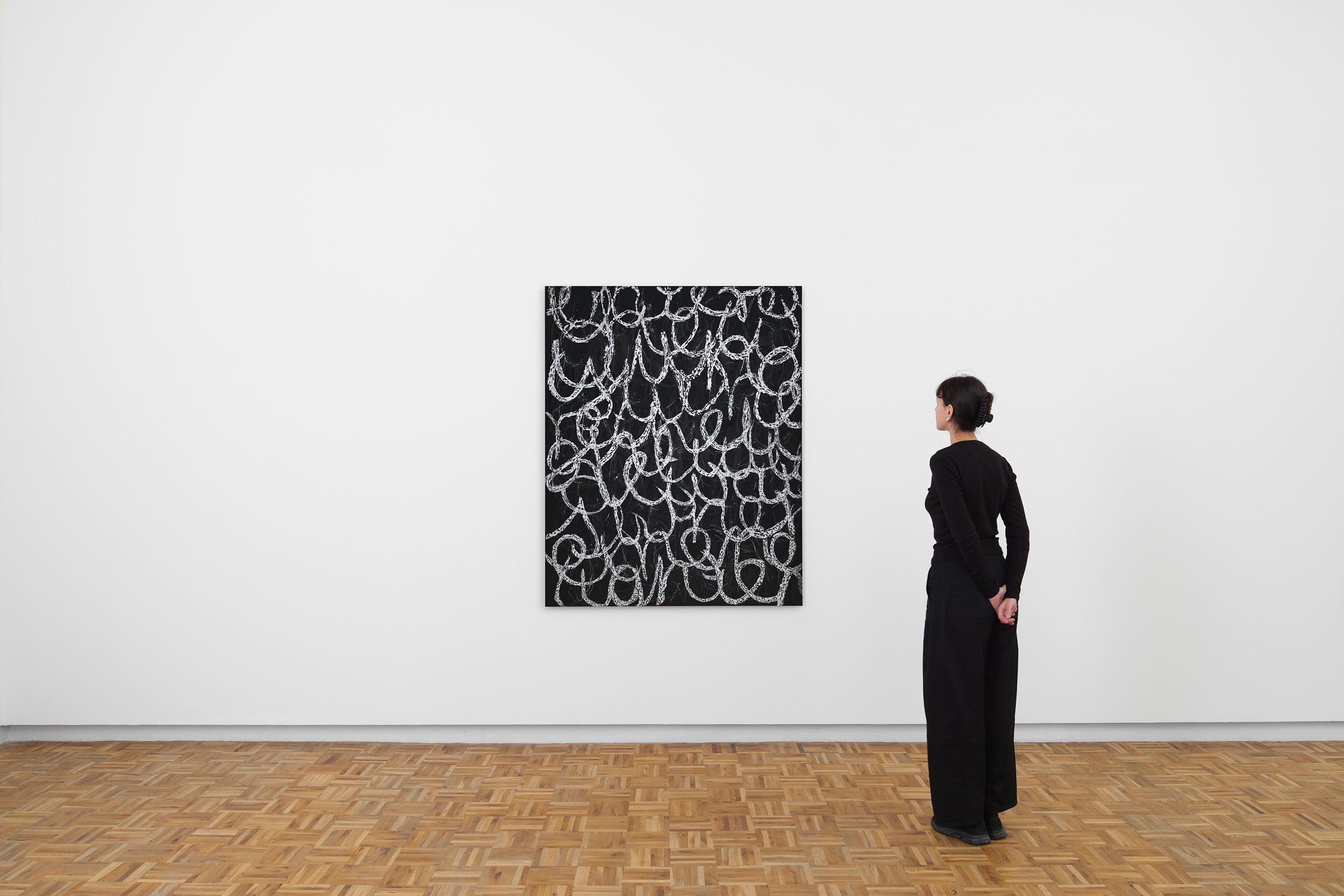
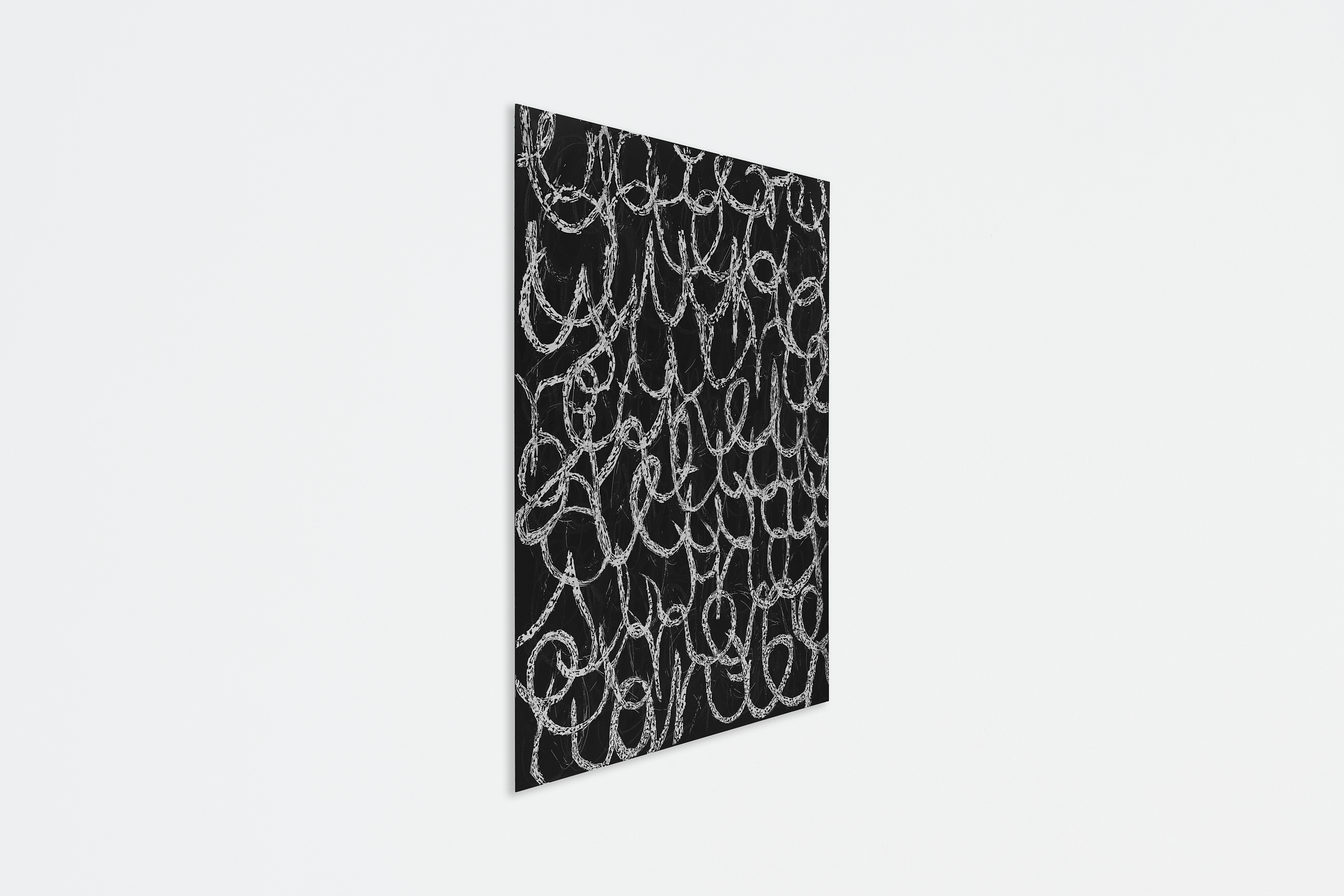

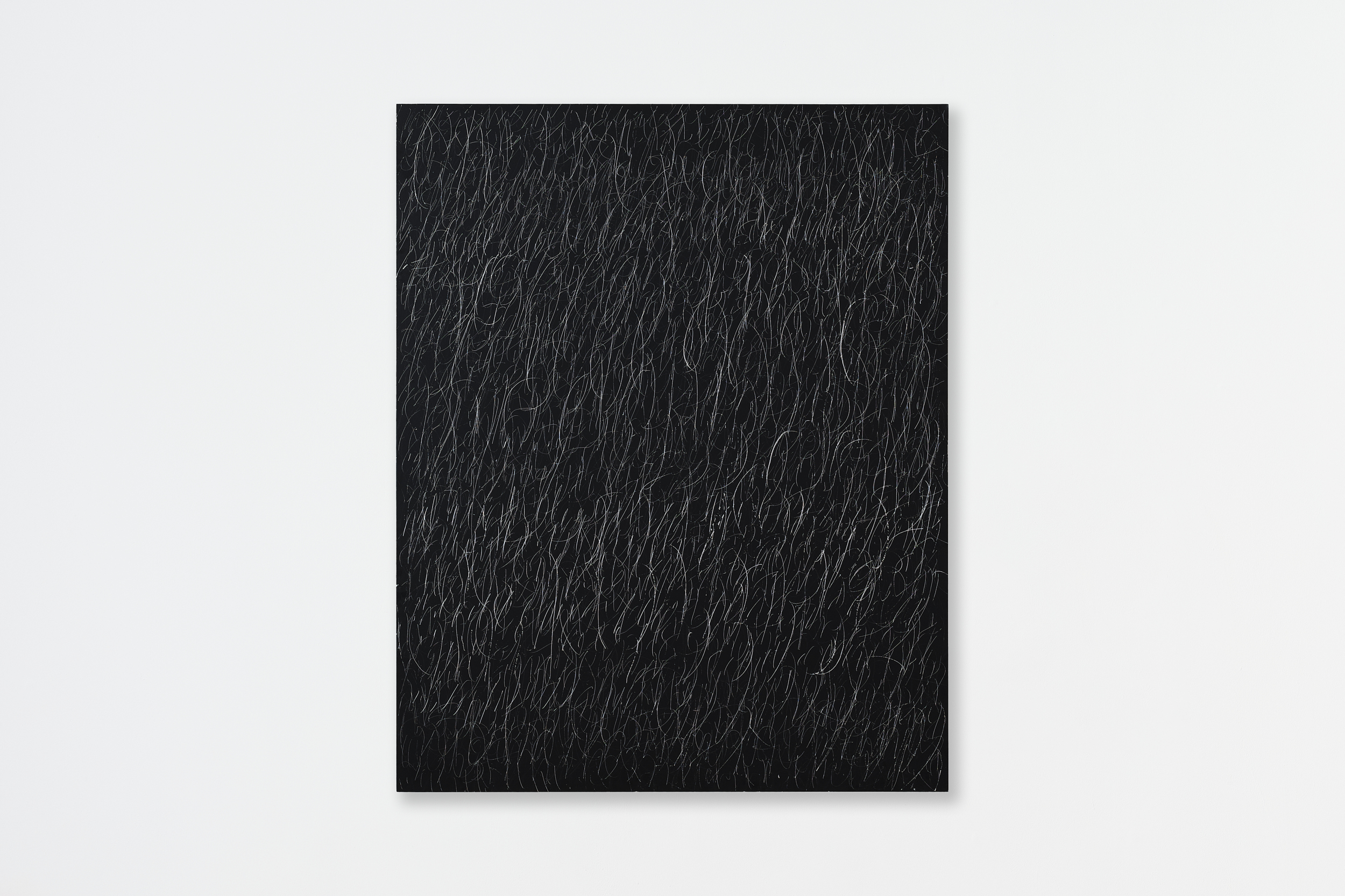
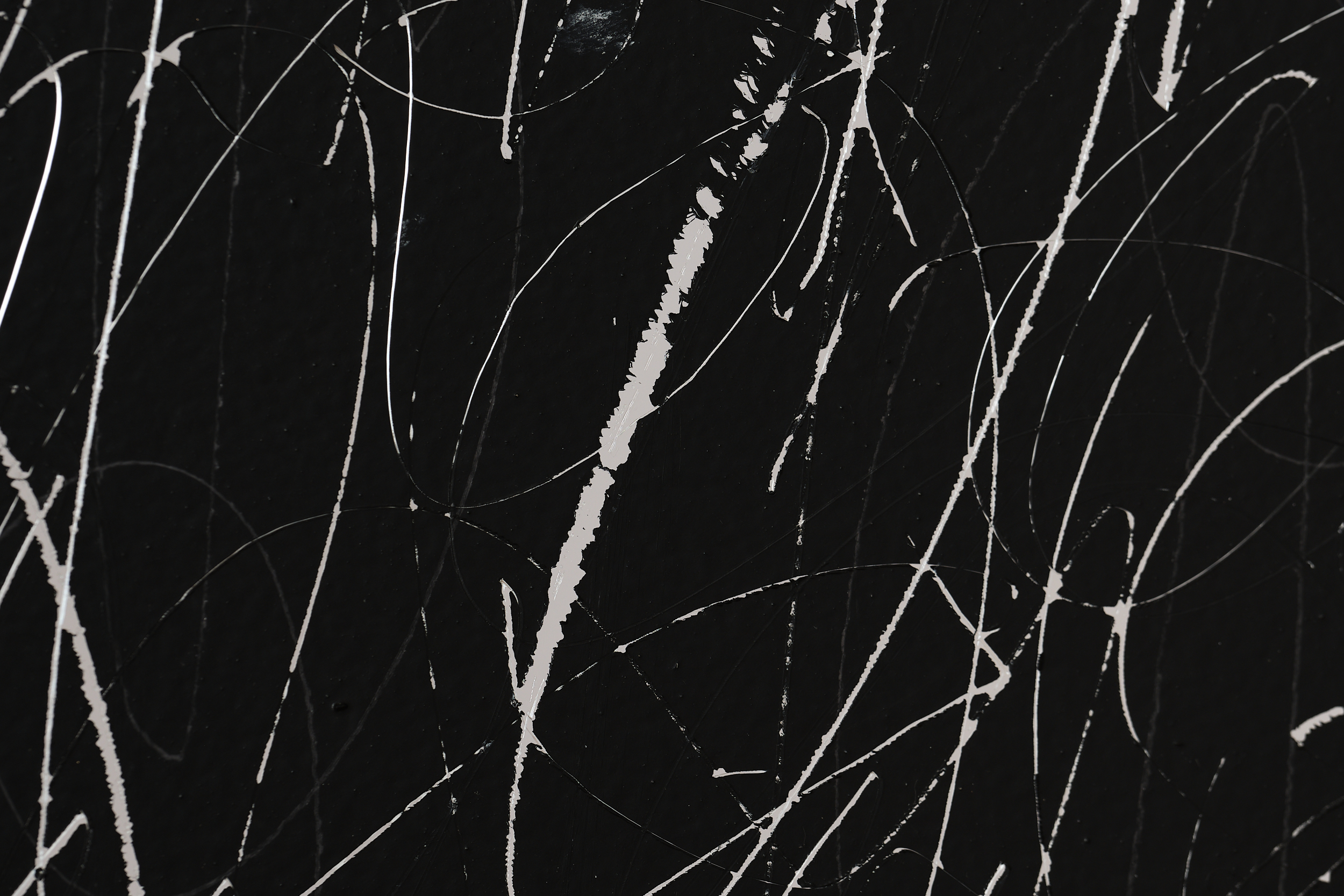
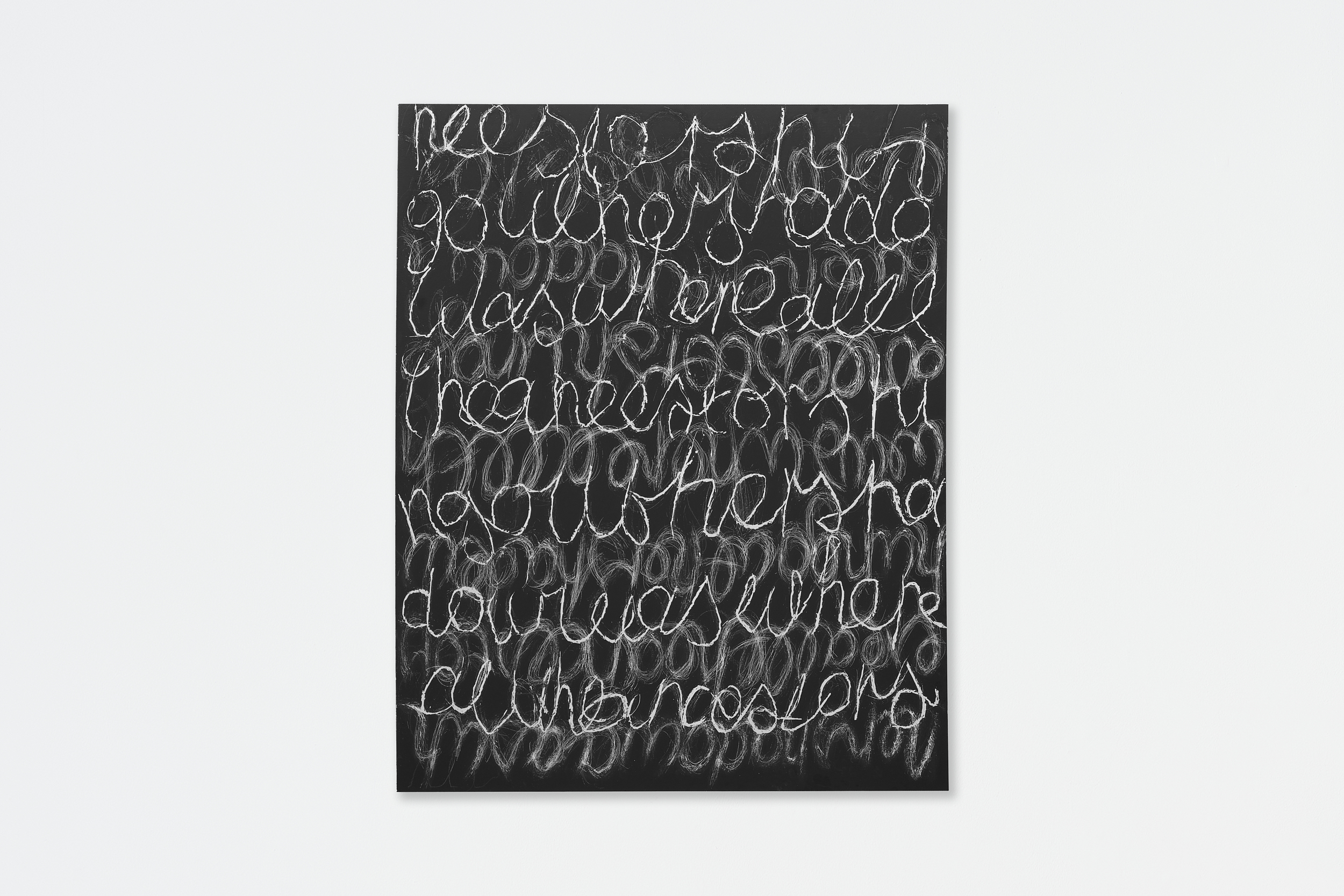
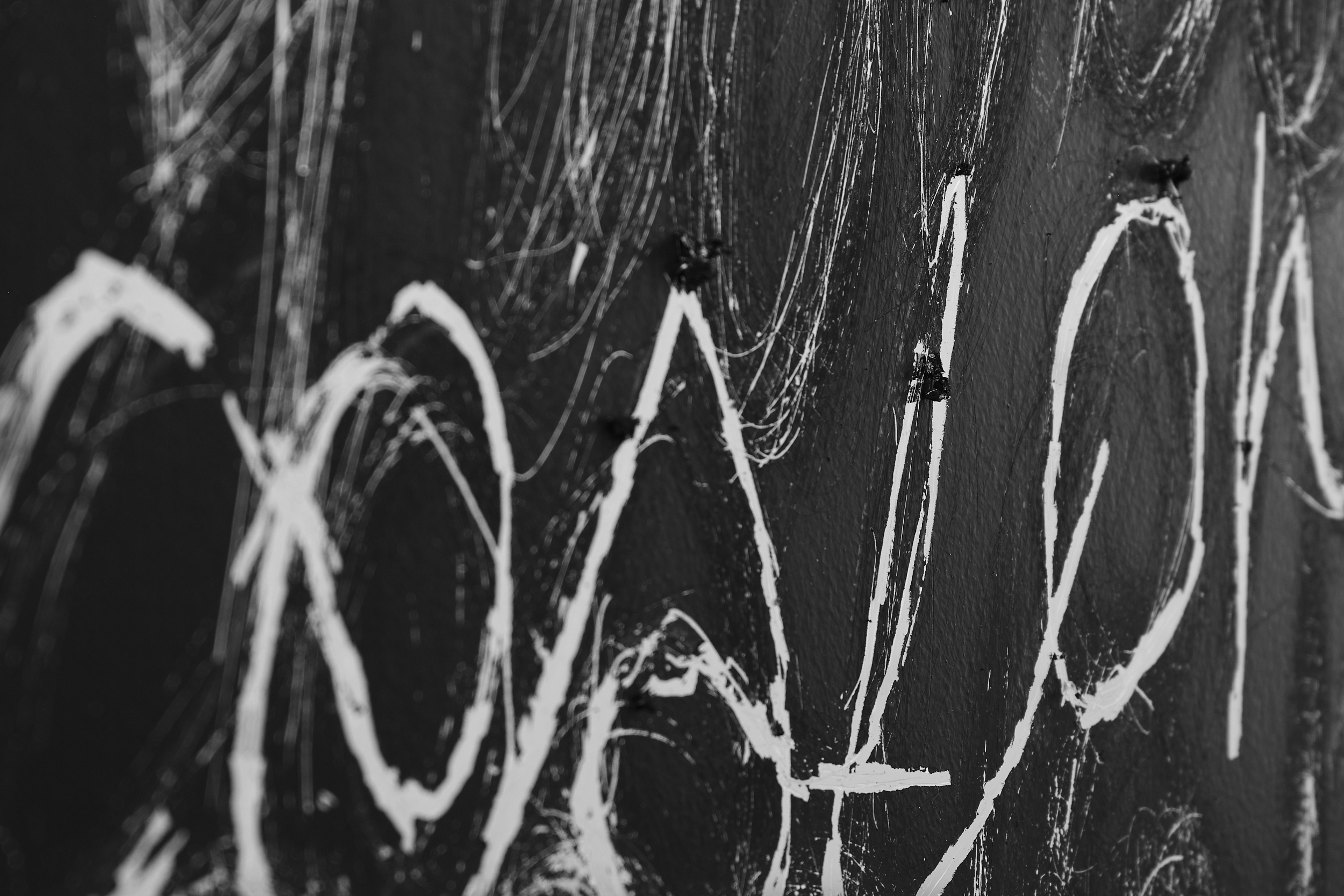
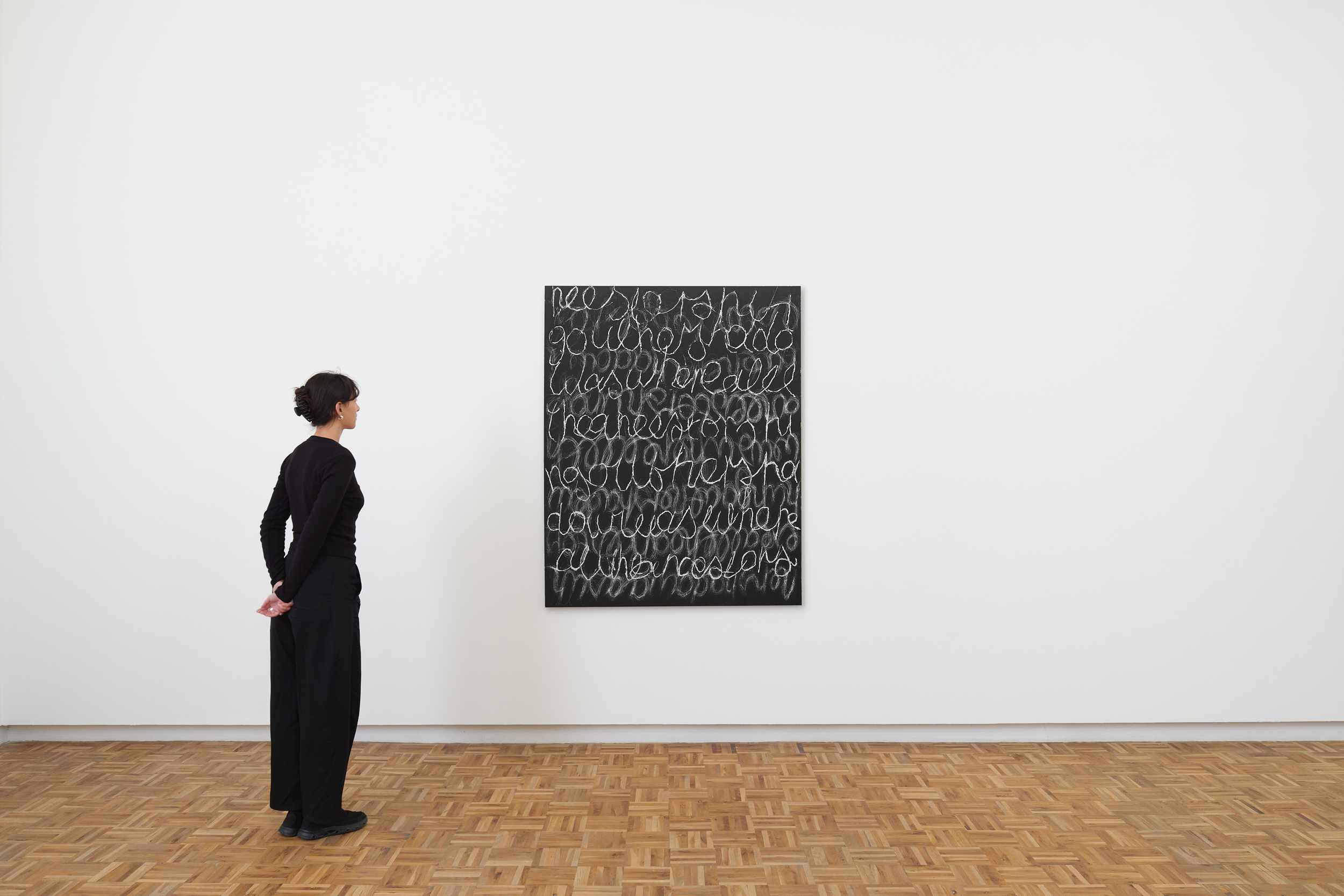
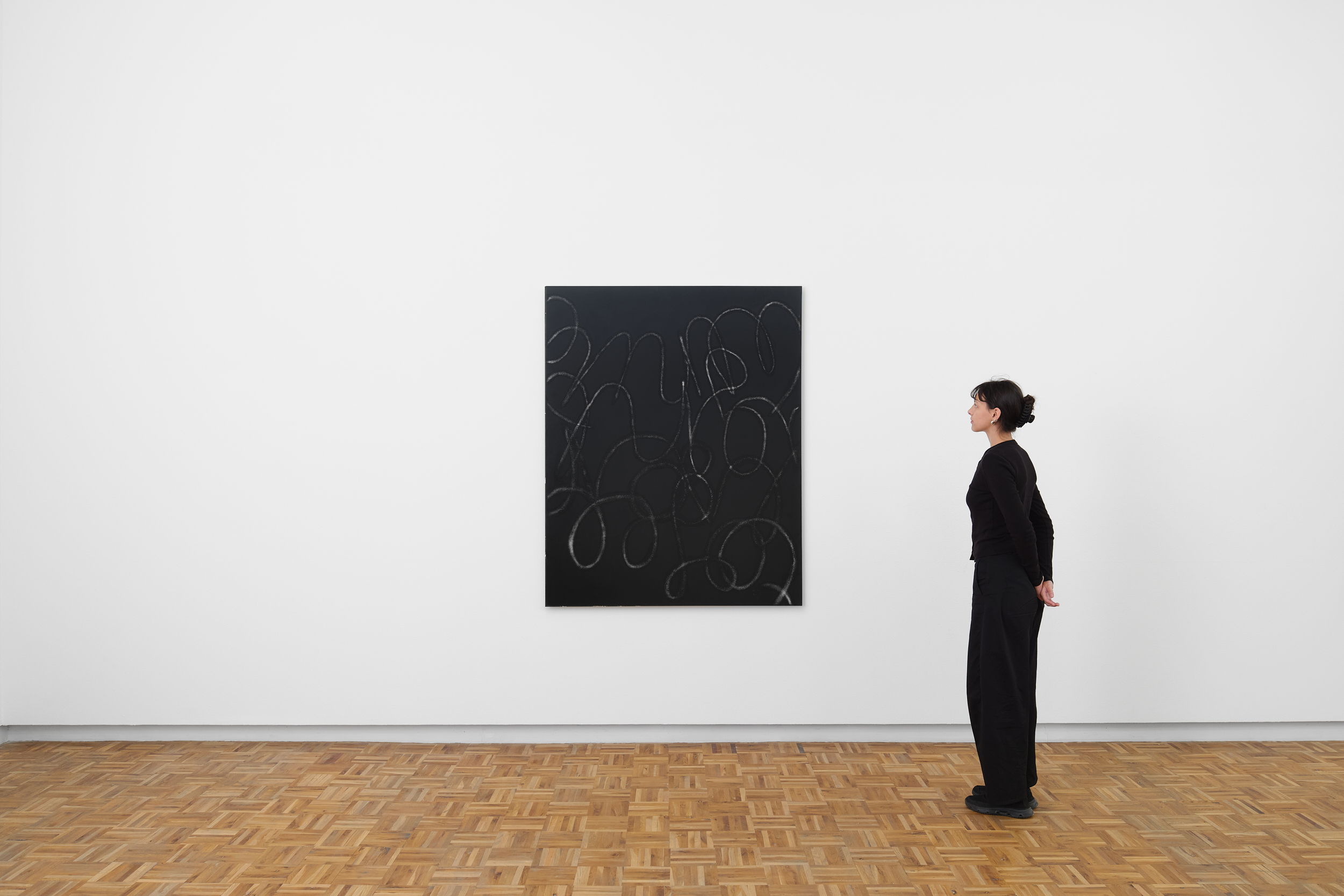
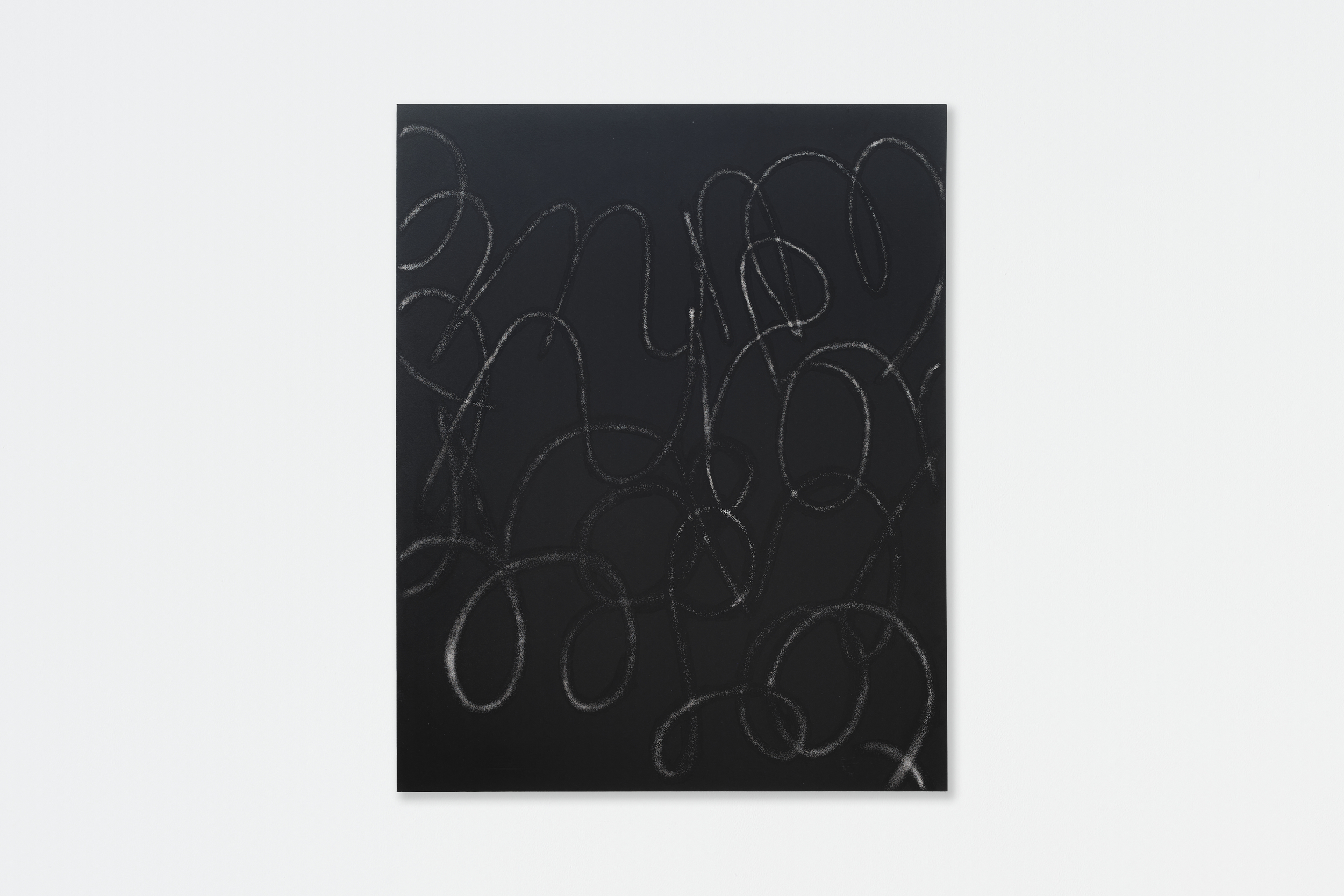
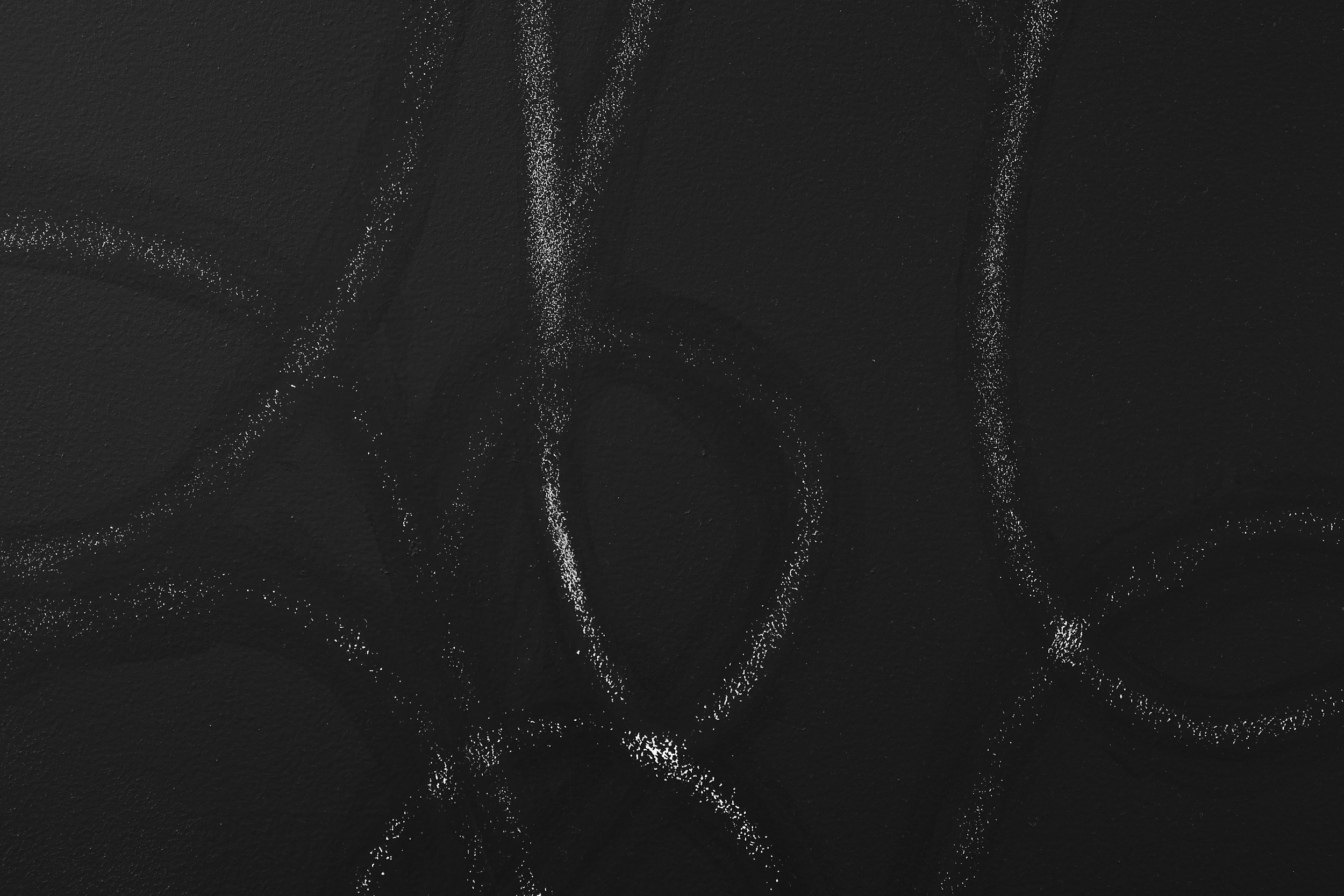
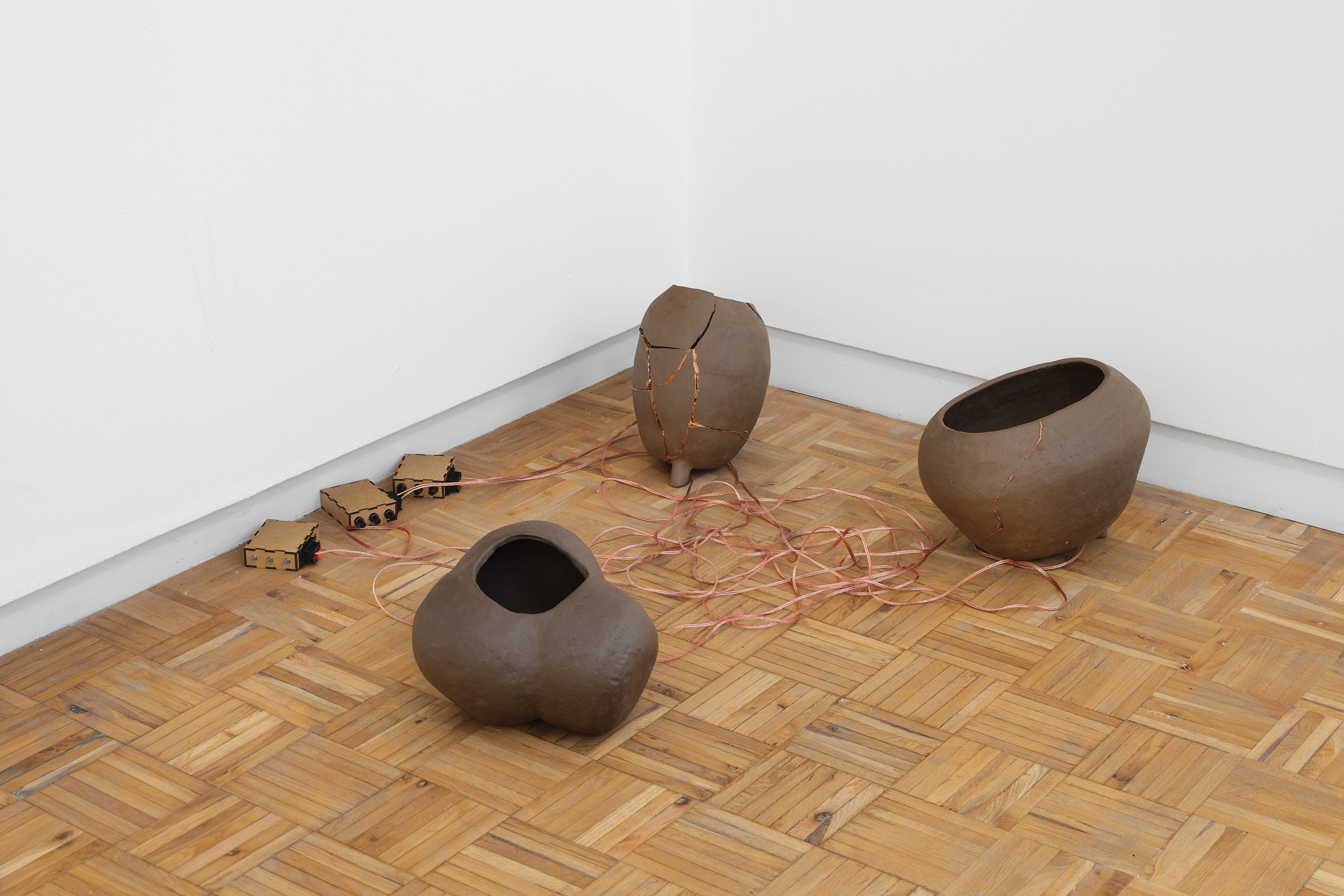
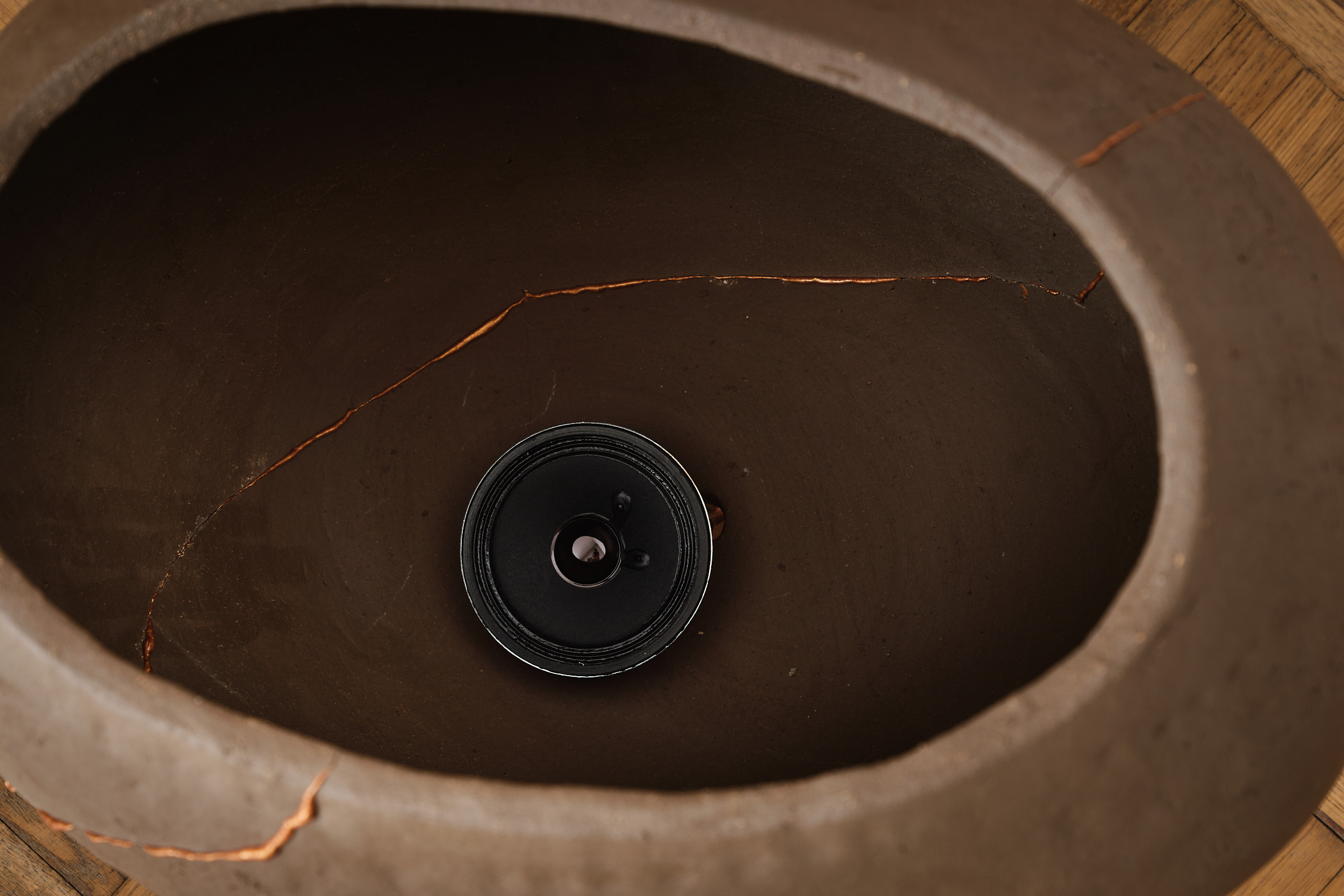
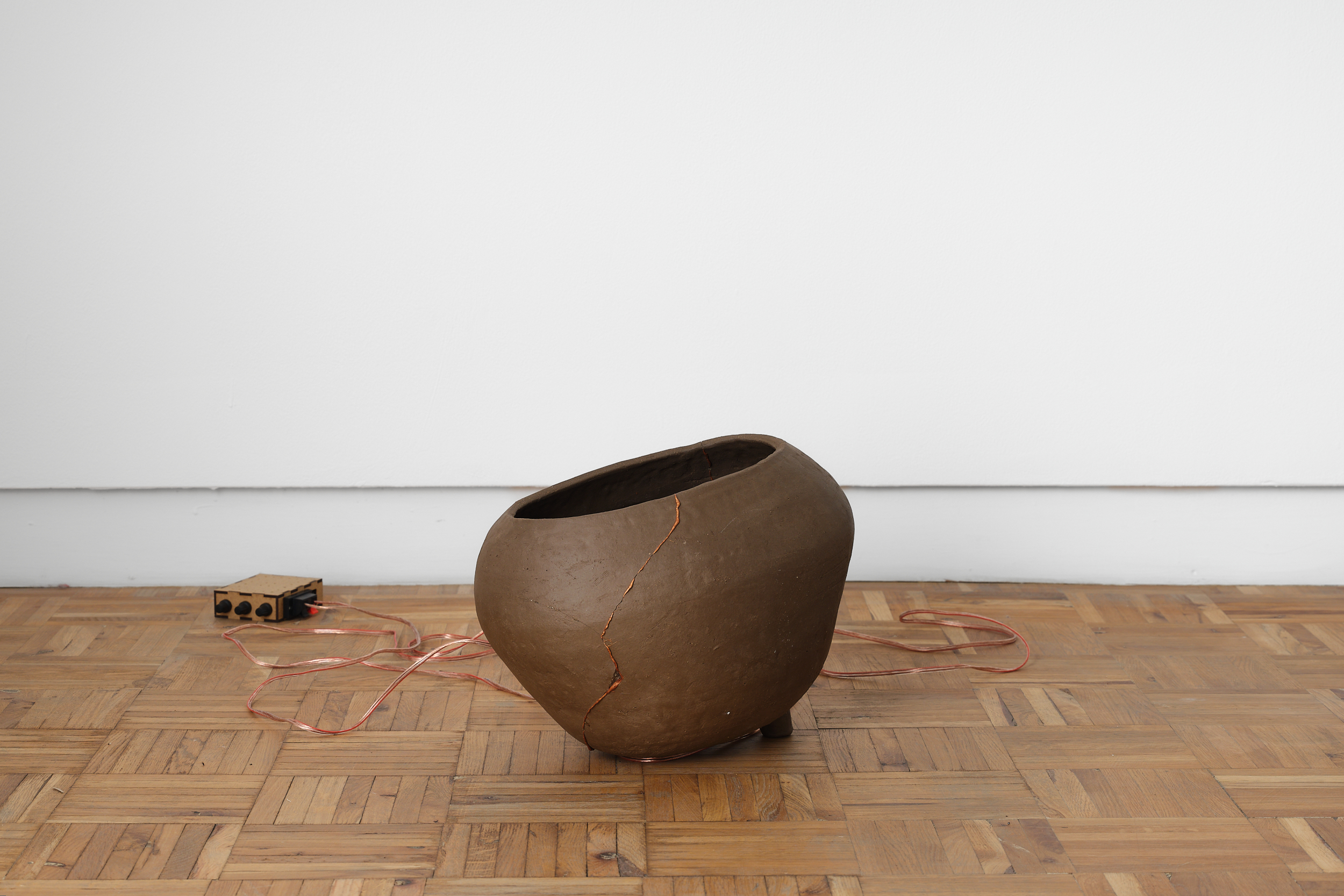
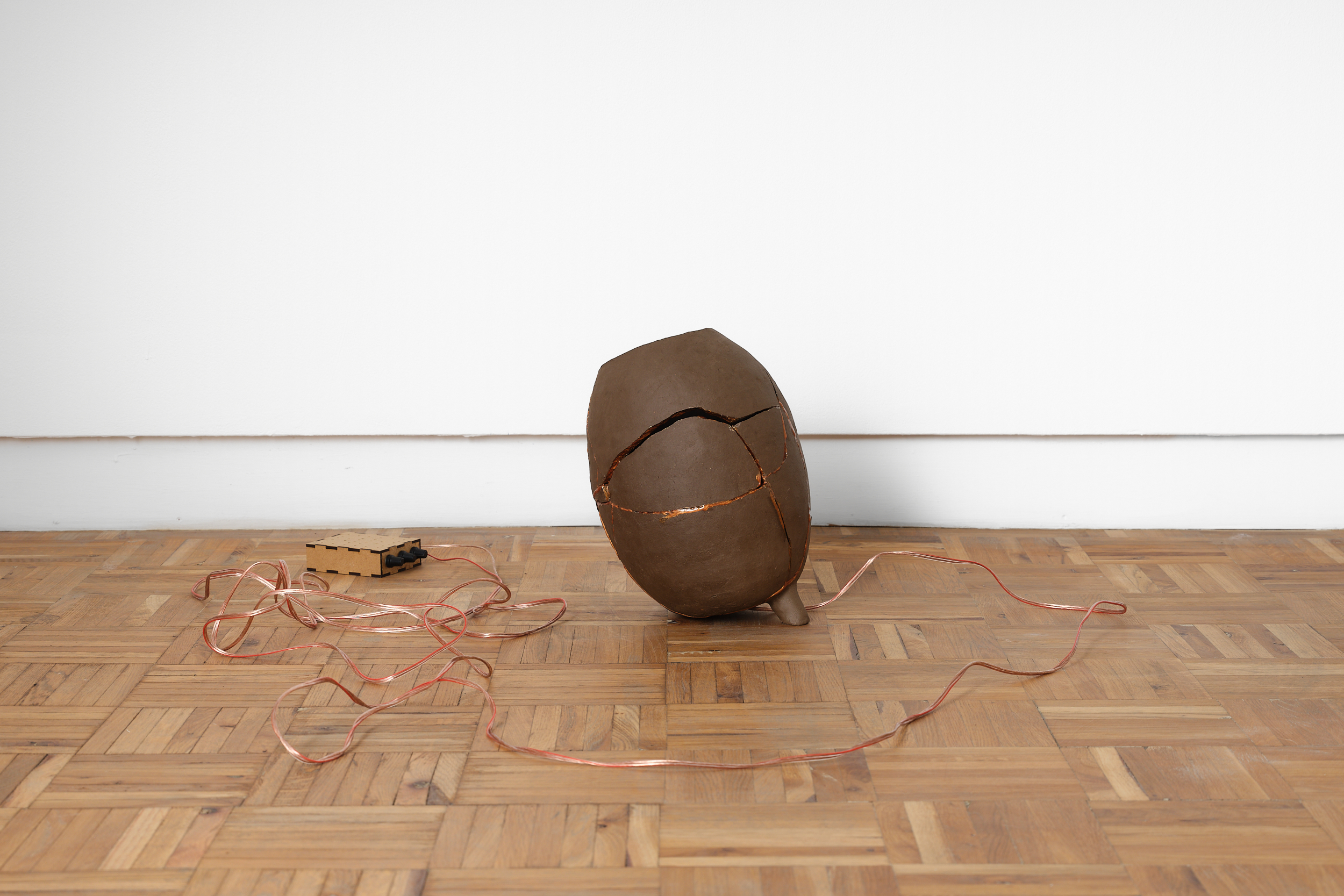



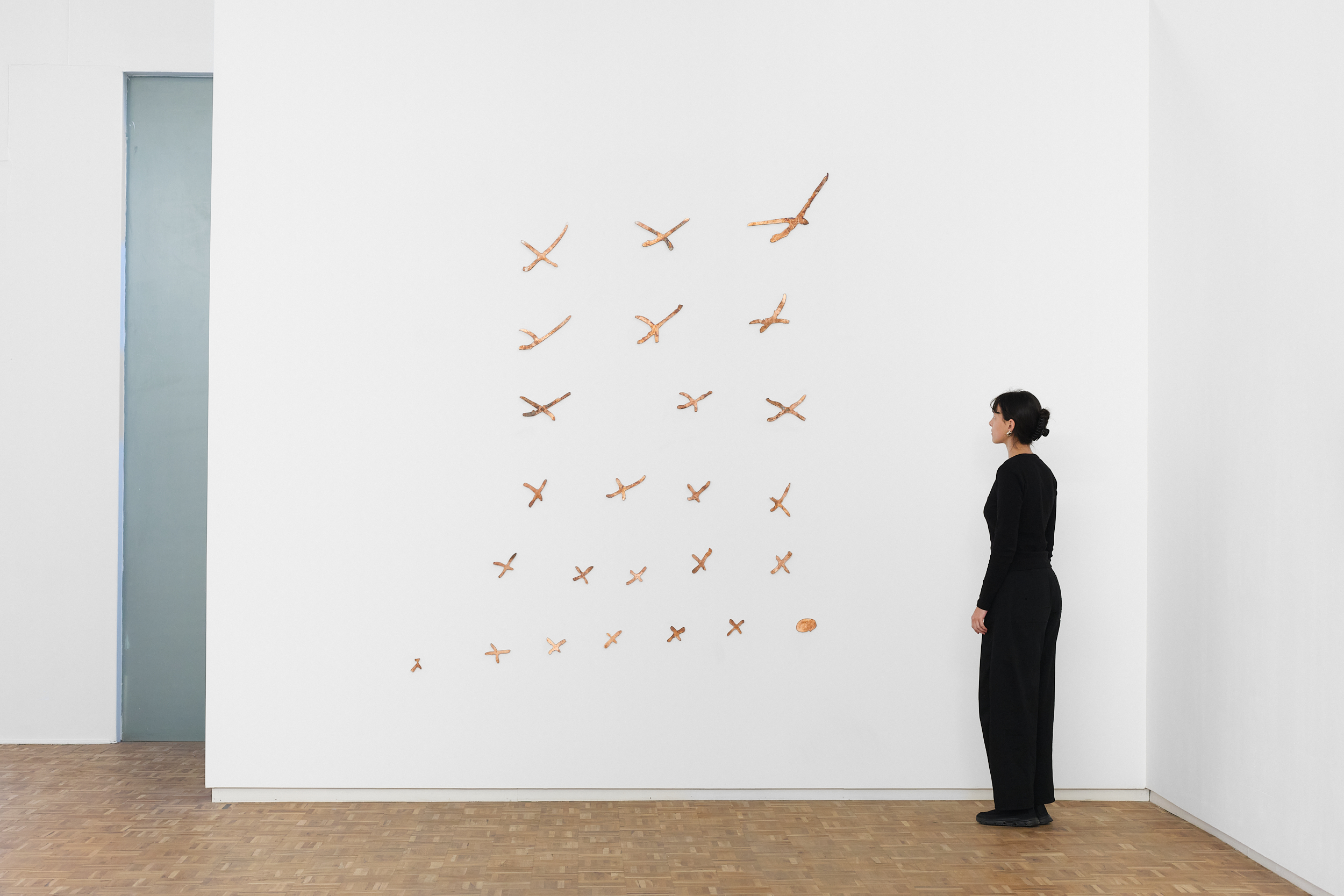
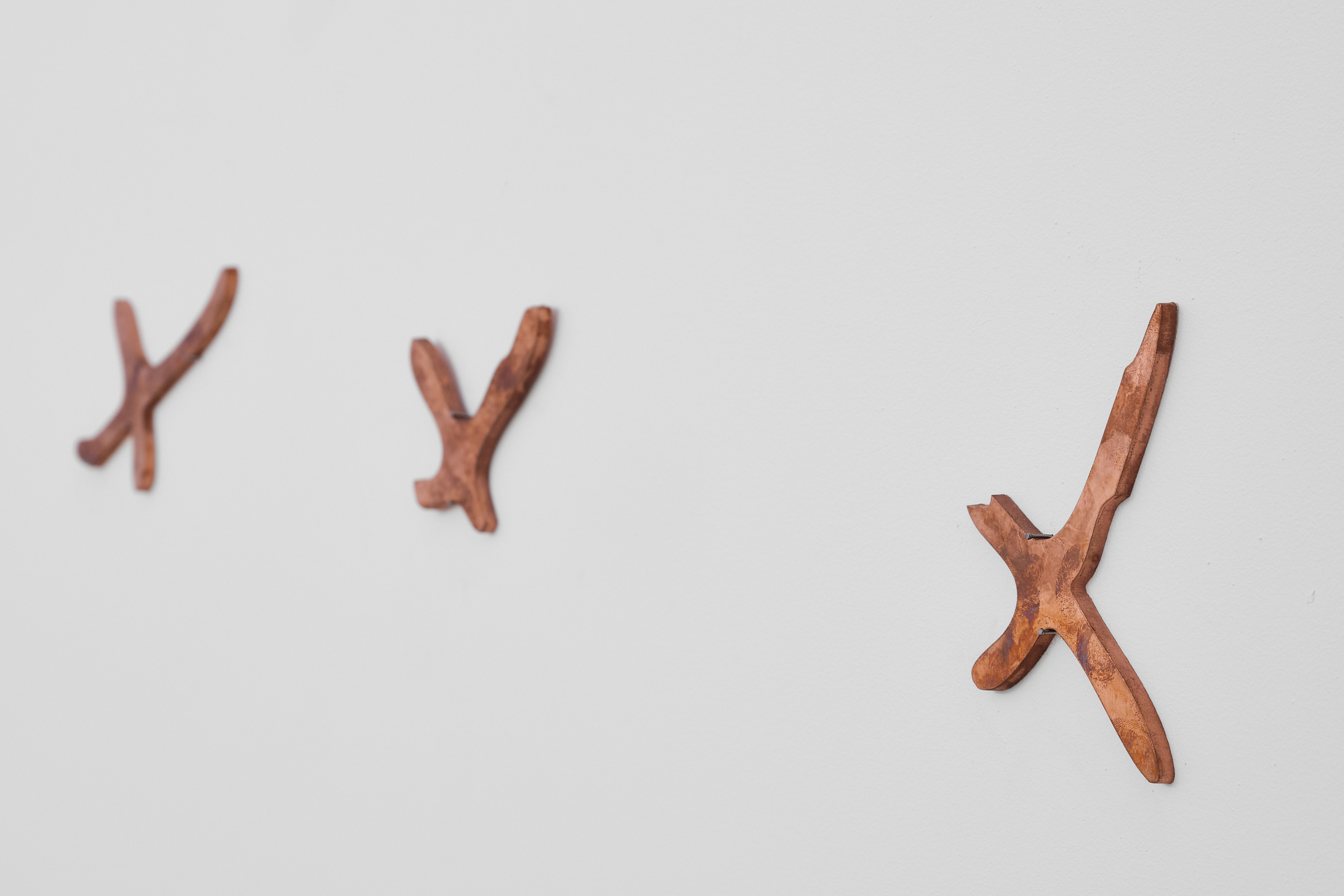
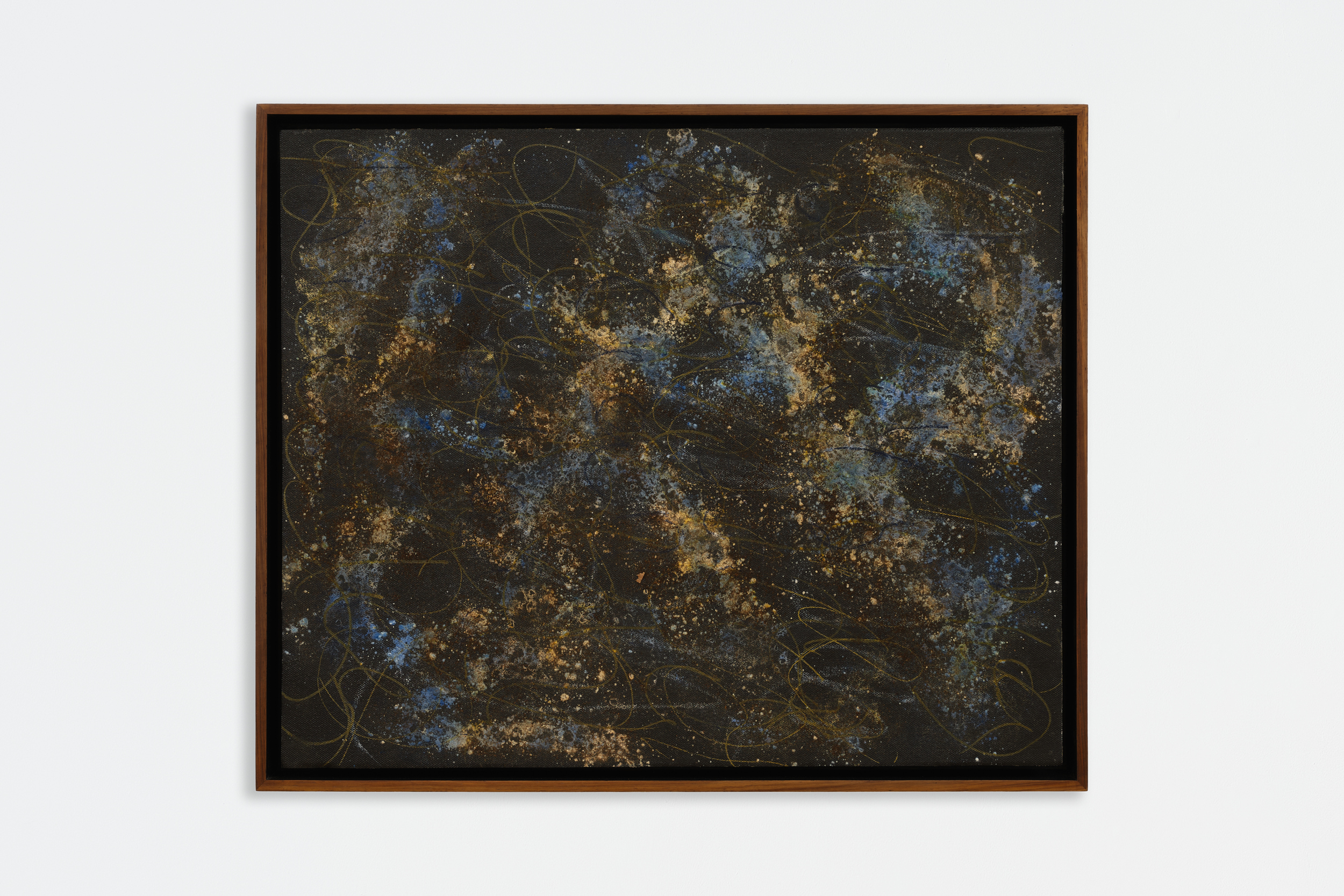
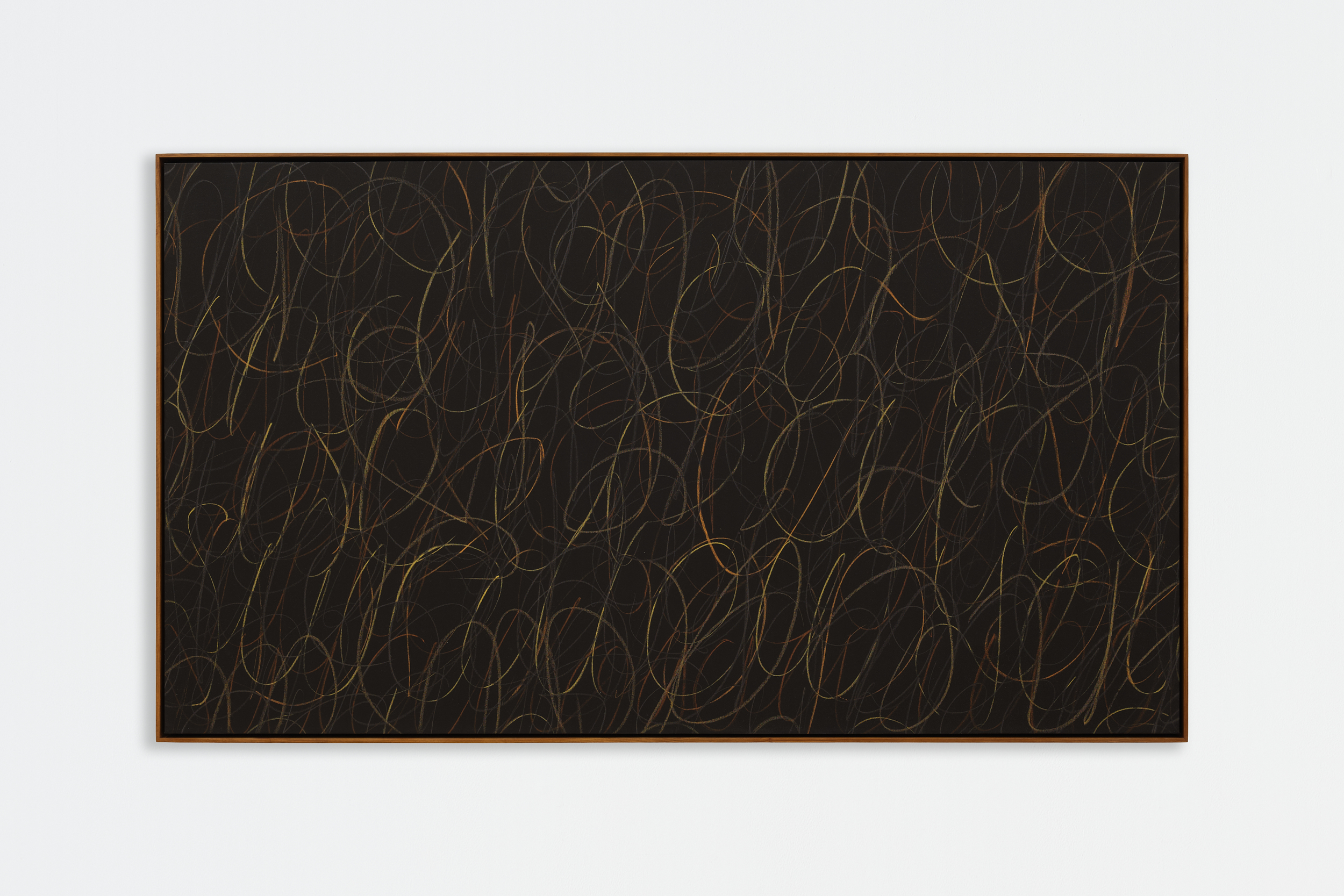
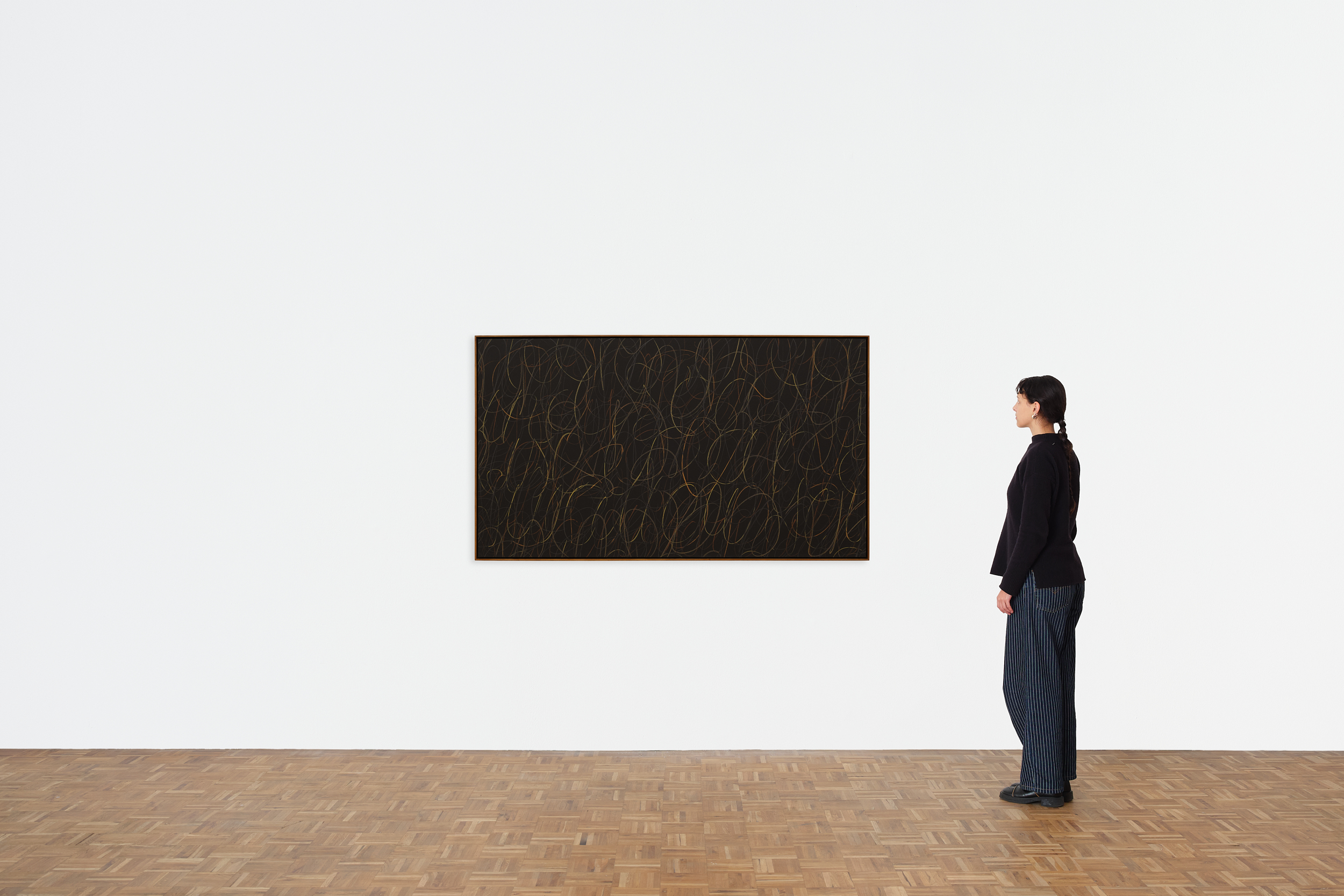
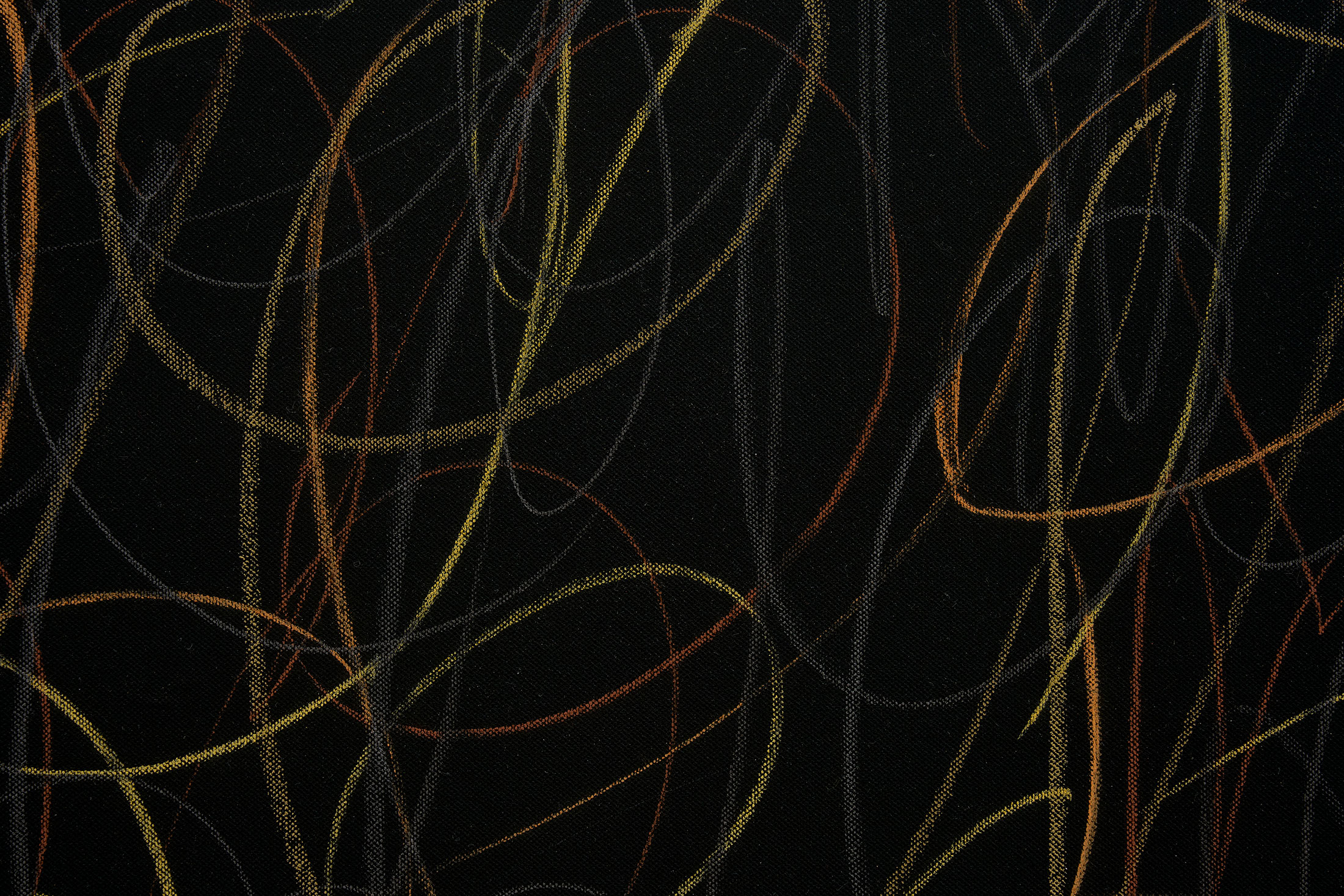
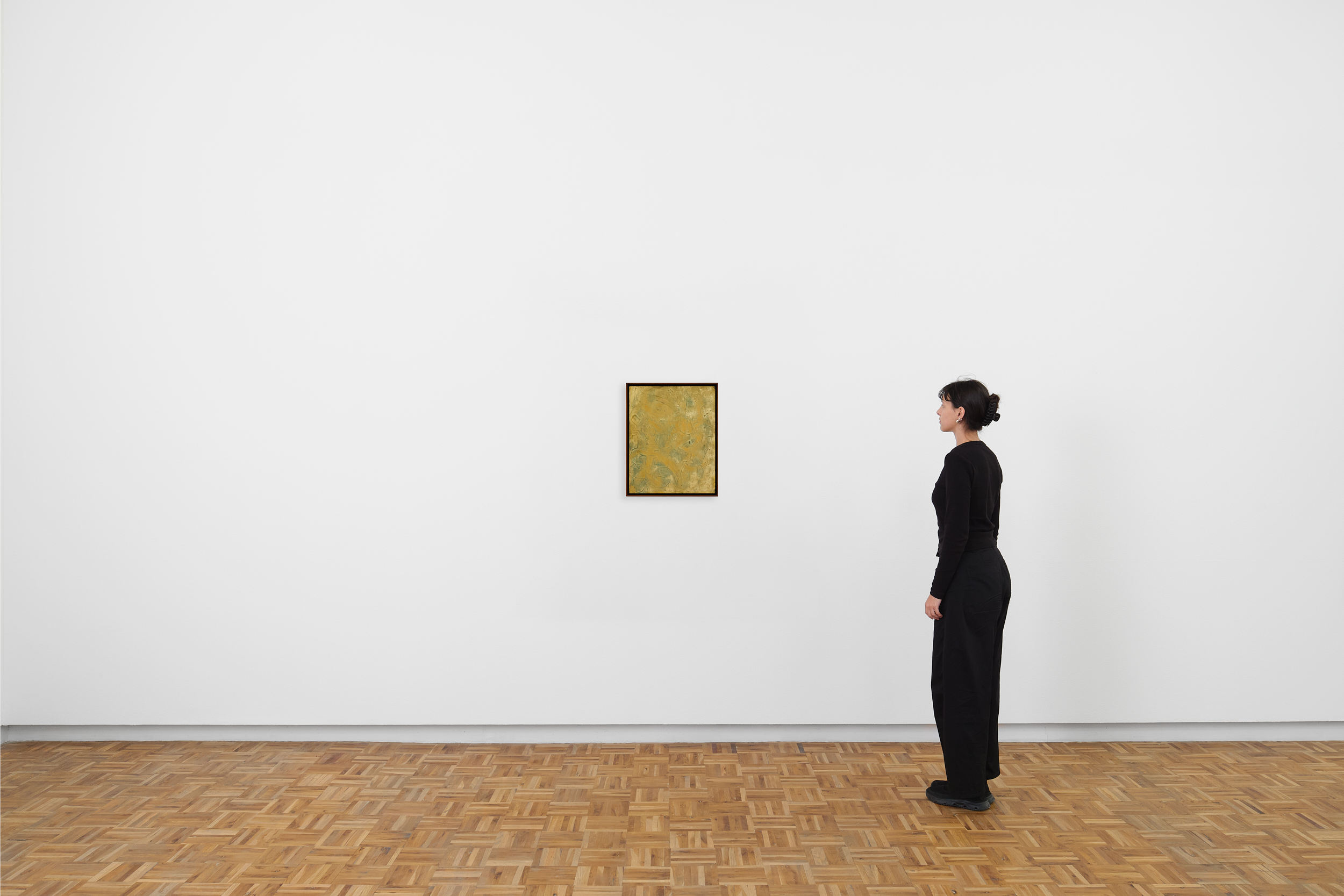
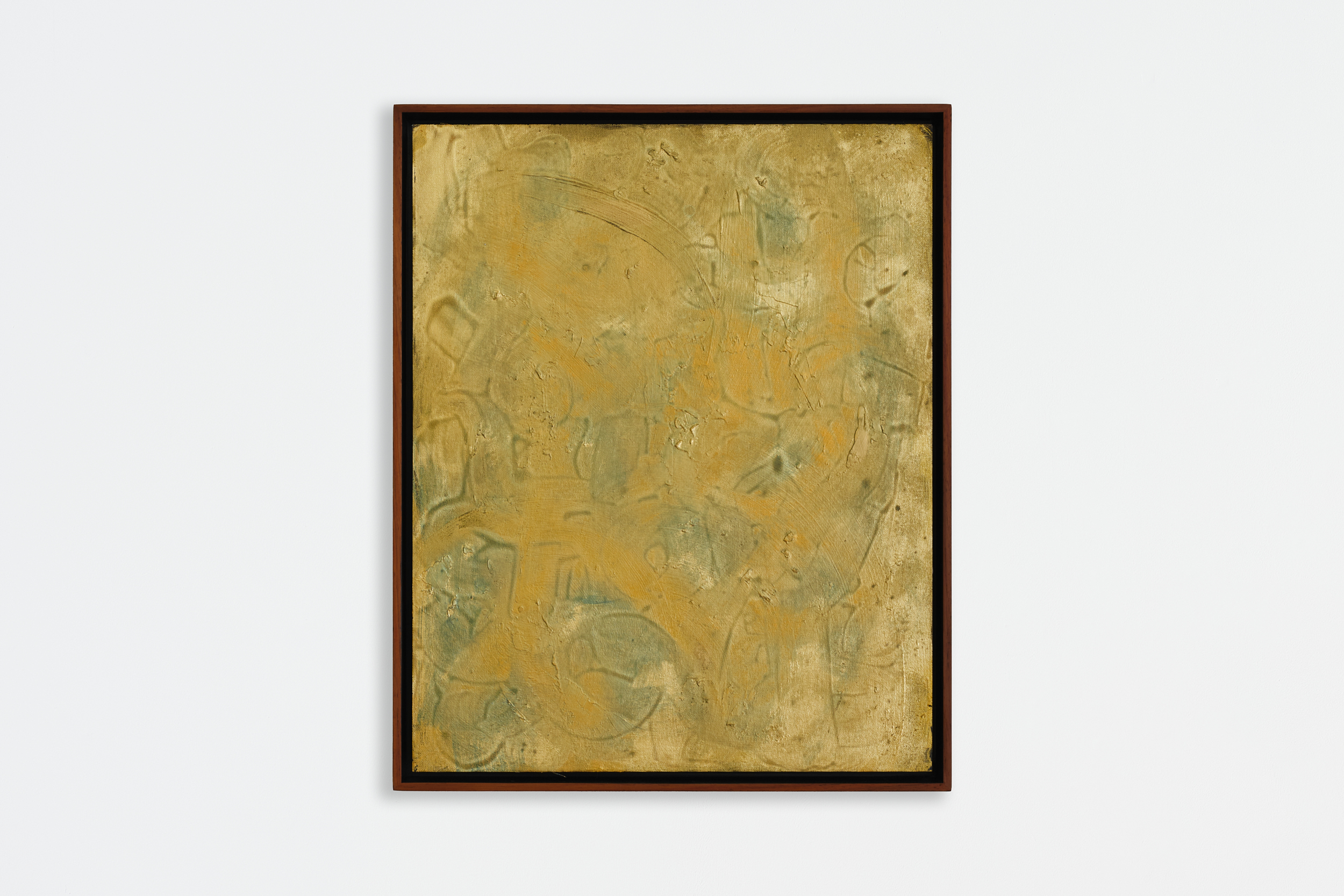
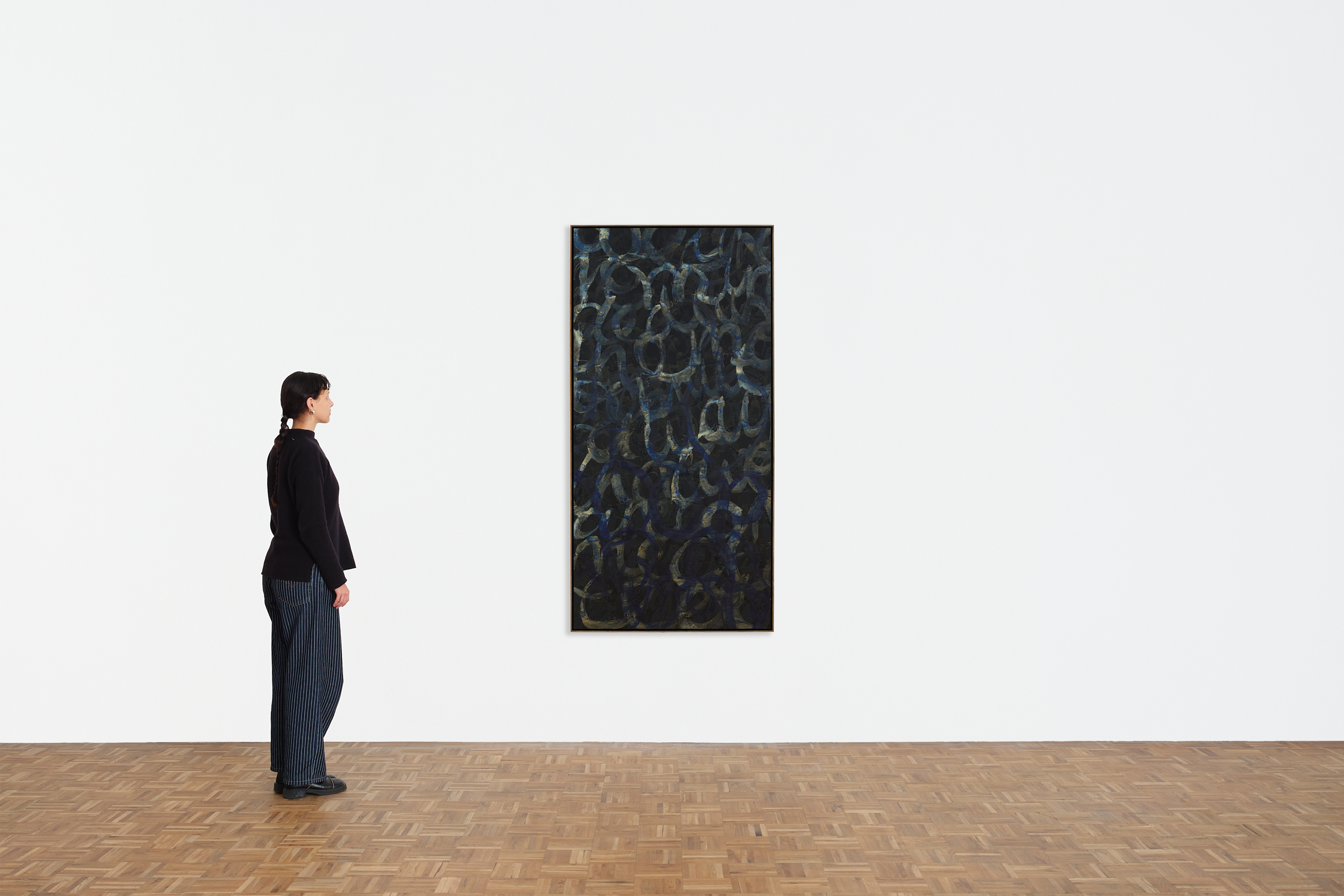
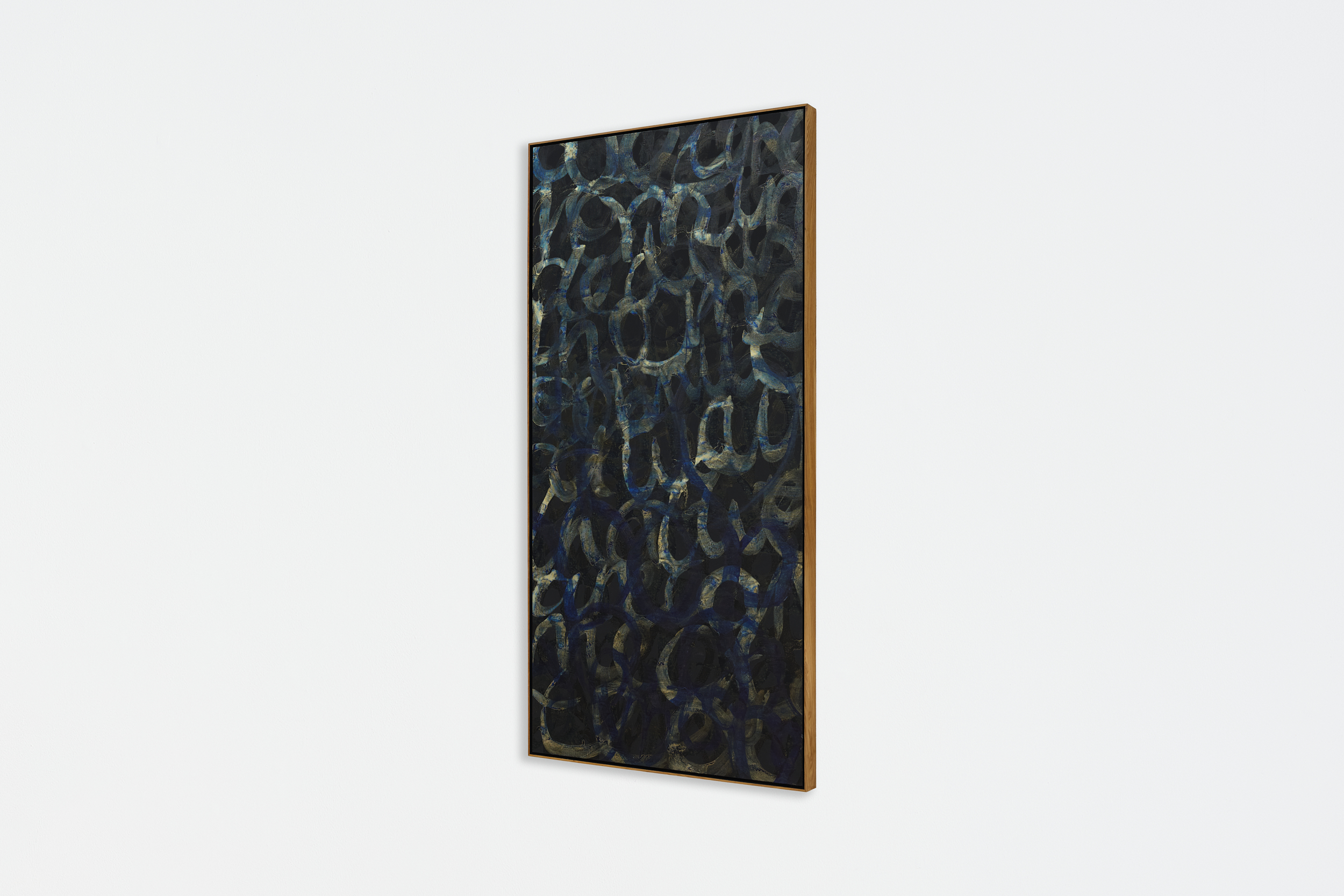
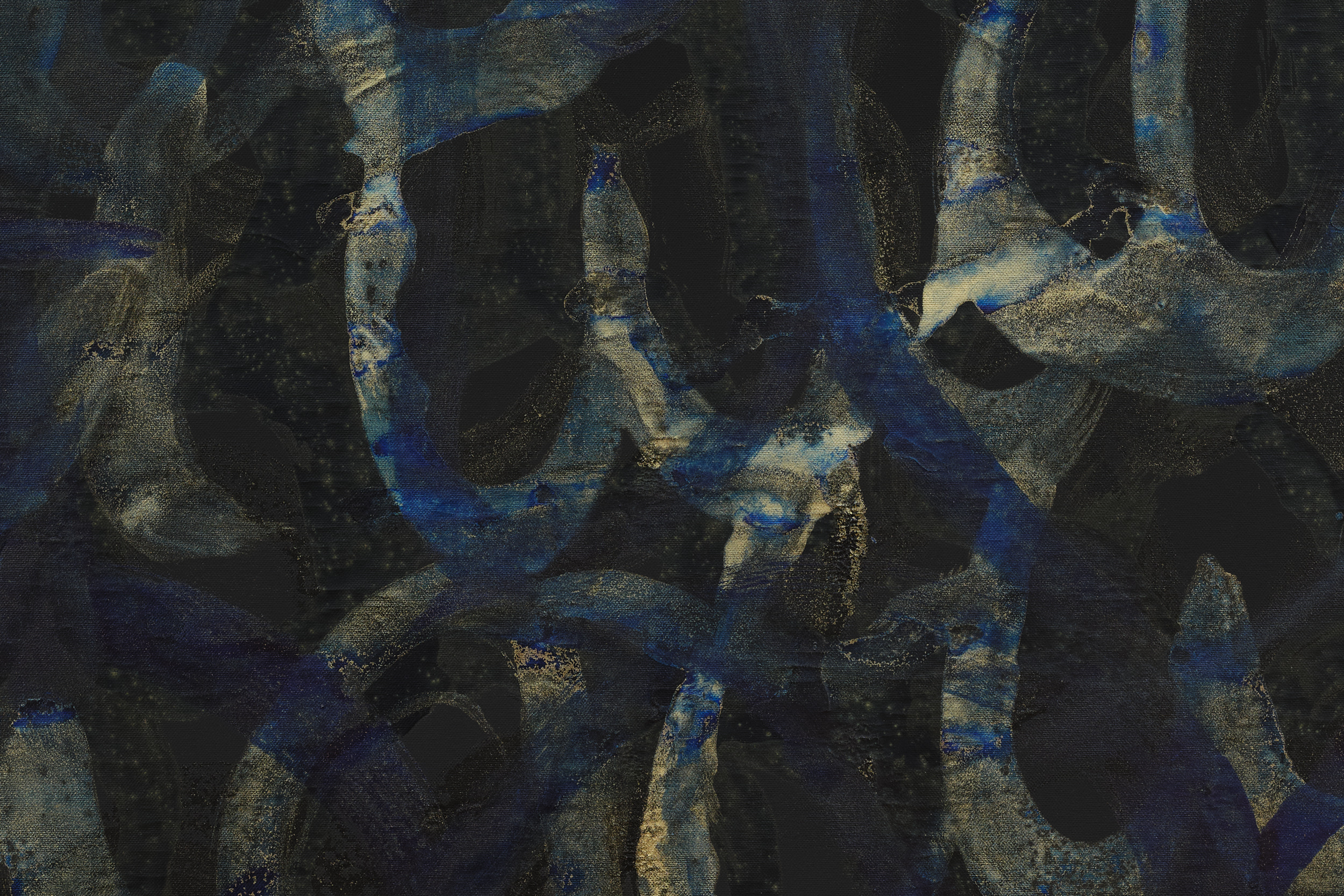
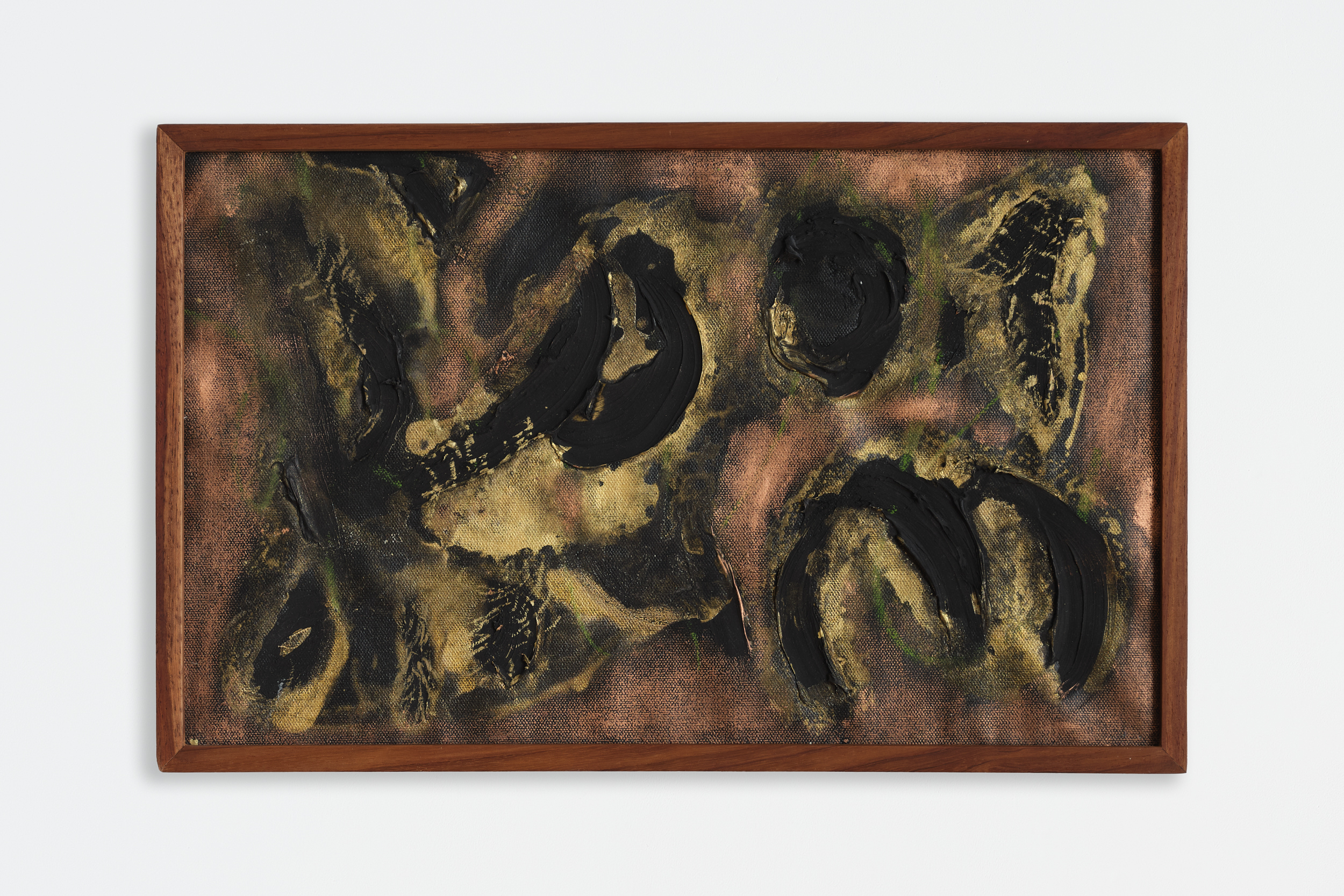
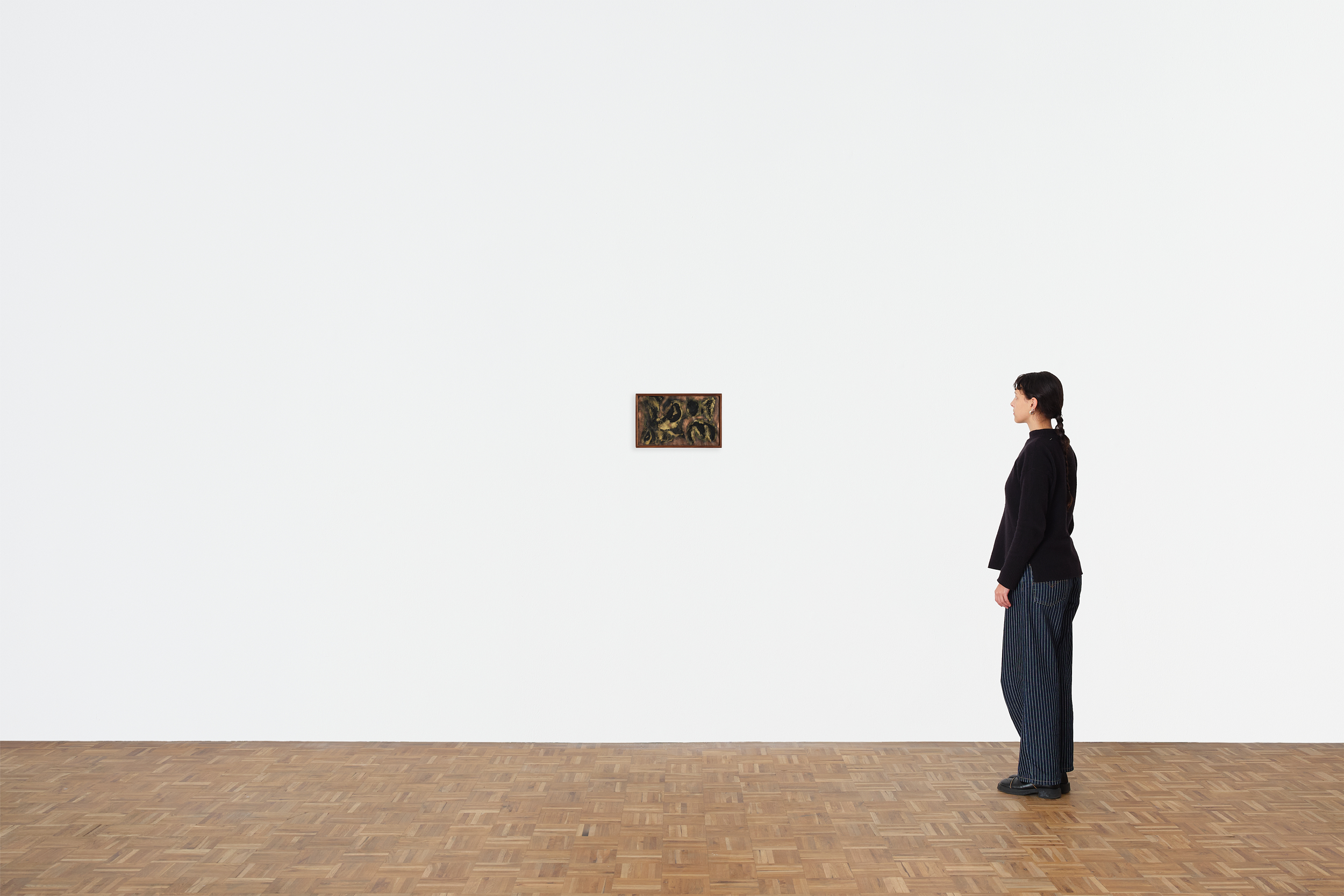
blank is pleased to present Fire on the mountain, a solo exhibition by donna Kukama, and her third with the gallery.
Text by Thulile Gamedze
Fire on the mountain is a chorus of sonic acts, sculptural objects and paintings that consider the transmutation of historic colonial violence over time, and grapple with what it means to take emergency, as status quo, for granted.
“There is fire on the mountain”, sings 2007 Asa, in warm, husky tones, “and nobody seems to be on the run”. The music, offering an undeniable groove in its reggae-like upstrum, provides an easy rhythmic backdrop to the dystopian scenes that the lyrics paint. Our shoulders move and our hips sway, even as Asa sings her despair of blood diamonds, indiscriminate killings, and a burning world. Kukama’s exhibition, sharing the track’s title, considers personal, state, and institutional apathy in a contemporary world marked by a publicised genocide, and realities of ongoing land dispossession and historic oppression from Palestine, to Congo, Sudan and the world.
Alchemies for watermelon futures (2025) is a sonic intervention of traumatised geographies, with its sounds emanating from three clay forms, their copper veins signalling the artist's careful work to reconstitute them after being broken in cross-border transit. Two of the vessels more obviously reference watermelons (whichever way you slice them), with the third, future fruit, abstracting itself into something yet unknown. The pots, with their tiny legs, have emerged not only from the watermelon’s coded symbology of Palestinian solidarity, but from ancient histories of alchemy. Defined as a precursor to chemistry, alchemy is engaged in “the transmutation of matter”, making attempts at converting metals into gold, and seeking “a universal elixir”. The magic-making of the alchemist is thus first in her imaginative capacity to recognise possible futures and parallel universes of matter, even as the current form is less than satisfactory.
Sound emanates from each earthen vessel, amplified by shape and solidity. Three voices — one Palestinian Arabic, one Xhosa, and another a combination of Mashi, Swahili and French — speak, chant, sing and pray, blending fiction, personal narrative, and collective ancestral experiences of violent incursions that forever undid their relations with land. The voices speak of different soil, but echo one another in their experience of the colonial mandate, which seeks accumulation and productivity in land, rather than connection and reciprocity.
we are reminded in the most brutal way that we are connected (2023–2025) explores material relationships and tensions. With its deep black background, and shining metallic marks, it recalls slick oil floating atop dark seas — a combination of matter which simply does not mix. Composed of acrylic paint, graphite, uprisings, ink, and a ‘glitter’ made of a fine bronze, the work sustains opacity, its marks seeming to be a written message that remains indecipherable. Its secret ingredient, ‘uprising’, however, clearly beckons action, calling for attention to the maladies of material realities that its surface reflects. Just as oil and ocean refuse to lose themselves in each other, so too does the oppressed voice continue to refuse the coercive lullaby of non-belonging, land exploitation, and gratuitous violence that defines postcolonial time.
On the other hand, To mourn a future that never happened declares its surrender to the fire, its surface of permanent marker scratched away in looping lines that echo unwritten freedoms. A further six panels of aluminium layered with enamel are similarly etched into — a record of excavations and frustrations scratched chaotically into material that bends, but is ultimately unyielding.
One day the deep sorrows carried by our rivers, oceans, and seas, will rise up and swallow you whole (2024). The warning, a thinly coded reference to both the river and the sea, is written chaotically in pastel, over a background of acrylic, graphite and ‘faith’. Kukama’s secret ingredients, whether faith, wind, or trust, offer a window into the energetic imperative of her practice. Her paintings can be read as a transmutation of her performance work, which has historically emphasised memorial and the transfer of memory, new institution-building, and often-opaque spell-casting or energetic intervention.
Instead we counted ecocides, ethnocides, and democides lends object form to an act of memorial counting — or perhaps accounting — performed in collaboration with Daiane Ciriǎco in São Paulo in 2016. During the durational performance, the pair’s counting referenced the years of Portuguese colonial occupation in Brazil, with Kukama drawing ‘x’ marks that echoed, played with, and extended the rhythms of the count. In the sculptural work, a page of these are rendered in copper, attached, as they appeared, directly to the wall. In both material and form, the small x-shaped objects recall the now-Congo’s Katanga crosses or ‘handas’, a currency from the 19th and early 20th centuries that was cast in copper using sand molds. Now layered with a horrifying situation defined by globally-assisted violence in the manic pursuit of natural resources, Kukama’s count puts voice to the ways currency, under the current dispensation, has been configured through exploitation and genocide, rather than through exchange.
The count is at once a historical record of violence and death, and a countdown to rupture and an emergent universe — how much heat must be applied to this planet for the alchemic transformation to finally occur? Kukama’s x’s ask how many bodies it will take.
“Oh, there is fire on the mountaintop | And no one is a-runnin′”. Eighteen years after Asa sang these words, the flames have only risen higher. The exhibition’s title is a play with the sinister lyrics, and a reminder that what cooks this thing — this late capitalist, this racist, mad thing — are ferocious, perpetual flames that we may try to continue to ignore until we become their fuel.
Kukama’s Fire on the Mountain, reflects, through myriad form, on the violence of continued genocide and land theft from Palestine to our own backyards, and the collective apathy that withstands and sustains the mutations of colonial power through generations.
Special thanks to Jazmin Rojas Forero, Khathala Nkomo, Anan Ashour, Yves Ndagano, Ivonne Sheen Mogollón, and Mirta J Wambrug.
-
Text by Thulile Gamedze
Fire on the mountain is a chorus of sonic acts, sculptural objects and paintings that consider the transmutation of historic colonial violence over time, and grapple with what it means to take emergency, as status quo, for granted.
“There is fire on the mountain”, sings 2007 Asa, in warm, husky tones, “and nobody seems to be on the run”. The music, offering an undeniable groove in its reggae-like upstrum, provides an easy rhythmic backdrop to the dystopian scenes that the lyrics paint. Our shoulders move and our hips sway, even as Asa sings her despair of blood diamonds, indiscriminate killings, and a burning world. Kukama’s exhibition, sharing the track’s title, considers personal, state, and institutional apathy in a contemporary world marked by a publicised genocide, and realities of ongoing land dispossession and historic oppression from Palestine, to Congo, Sudan and the world.
Alchemies for watermelon futures (2025) is a sonic intervention of traumatised geographies, with its sounds emanating from three clay forms, their copper veins signalling the artist's careful work to reconstitute them after being broken in cross-border transit. Two of the vessels more obviously reference watermelons (whichever way you slice them), with the third, future fruit, abstracting itself into something yet unknown. The pots, with their tiny legs, have emerged not only from the watermelon’s coded symbology of Palestinian solidarity, but from ancient histories of alchemy. Defined as a precursor to chemistry, alchemy is engaged in “the transmutation of matter”, making attempts at converting metals into gold, and seeking “a universal elixir”. The magic-making of the alchemist is thus first in her imaginative capacity to recognise possible futures and parallel universes of matter, even as the current form is less than satisfactory.
Sound emanates from each earthen vessel, amplified by shape and solidity. Three voices — one Palestinian Arabic, one Xhosa, and another a combination of Mashi, Swahili and French — speak, chant, sing and pray, blending fiction, personal narrative, and collective ancestral experiences of violent incursions that forever undid their relations with land. The voices speak of different soil, but echo one another in their experience of the colonial mandate, which seeks accumulation and productivity in land, rather than connection and reciprocity.
we are reminded in the most brutal way that we are connected (2023–2025) explores material relationships and tensions. With its deep black background, and shining metallic marks, it recalls slick oil floating atop dark seas — a combination of matter which simply does not mix. Composed of acrylic paint, graphite, uprisings, ink, and a ‘glitter’ made of a fine bronze, the work sustains opacity, its marks seeming to be a written message that remains indecipherable. Its secret ingredient, ‘uprising’, however, clearly beckons action, calling for attention to the maladies of material realities that its surface reflects. Just as oil and ocean refuse to lose themselves in each other, so too does the oppressed voice continue to refuse the coercive lullaby of non-belonging, land exploitation, and gratuitous violence that defines postcolonial time.
On the other hand, To mourn a future that never happened declares its surrender to the fire, its surface of permanent marker scratched away in looping lines that echo unwritten freedoms. A further six panels of aluminium layered with enamel are similarly etched into — a record of excavations and frustrations scratched chaotically into material that bends, but is ultimately unyielding.
One day the deep sorrows carried by our rivers, oceans, and seas, will rise up and swallow you whole (2024). The warning, a thinly coded reference to both the river and the sea, is written chaotically in pastel, over a background of acrylic, graphite and ‘faith’. Kukama’s secret ingredients, whether faith, wind, or trust, offer a window into the energetic imperative of her practice. Her paintings can be read as a transmutation of her performance work, which has historically emphasised memorial and the transfer of memory, new institution-building, and often-opaque spell-casting or energetic intervention.
Instead we counted ecocides, ethnocides, and democides lends object form to an act of memorial counting — or perhaps accounting — performed in collaboration with Daiane Ciriǎco in São Paulo in 2016. During the durational performance, the pair’s counting referenced the years of Portuguese colonial occupation in Brazil, with Kukama drawing ‘x’ marks that echoed, played with, and extended the rhythms of the count. In the sculptural work, a page of these are rendered in copper, attached, as they appeared, directly to the wall. In both material and form, the small x-shaped objects recall the now-Congo’s Katanga crosses or ‘handas’, a currency from the 19th and early 20th centuries that was cast in copper using sand molds. Now layered with a horrifying situation defined by globally-assisted violence in the manic pursuit of natural resources, Kukama’s count puts voice to the ways currency, under the current dispensation, has been configured through exploitation and genocide, rather than through exchange.
The count is at once a historical record of violence and death, and a countdown to rupture and an emergent universe — how much heat must be applied to this planet for the alchemic transformation to finally occur? Kukama’s x’s ask how many bodies it will take.
“Oh, there is fire on the mountaintop | And no one is a-runnin′”. Eighteen years after Asa sang these words, the flames have only risen higher. The exhibition’s title is a play with the sinister lyrics, and a reminder that what cooks this thing — this late capitalist, this racist, mad thing — are ferocious, perpetual flames that we may try to continue to ignore until we become their fuel.
Kukama’s Fire on the Mountain, reflects, through myriad form, on the violence of continued genocide and land theft from Palestine to our own backyards, and the collective apathy that withstands and sustains the mutations of colonial power through generations.
-
Special thanks to Jazmin Rojas Forero, Khathala Nkomo, Anan Ashour, Yves Ndagano, Ivonne Sheen Mogollón, and Mirta J Wambrug.